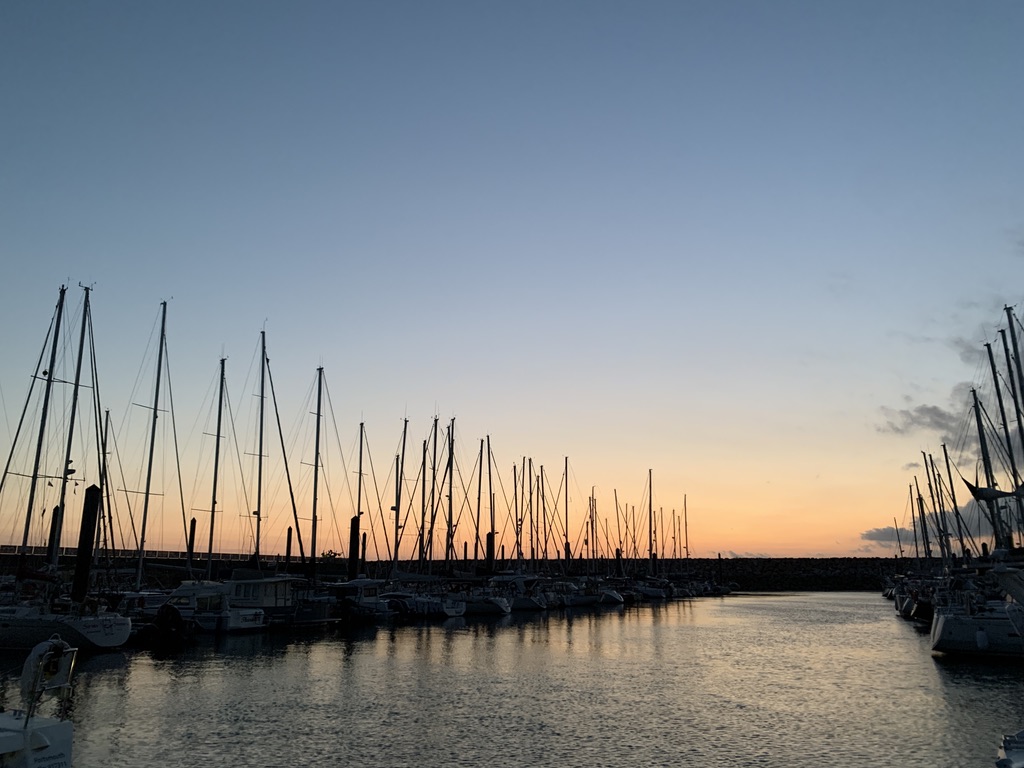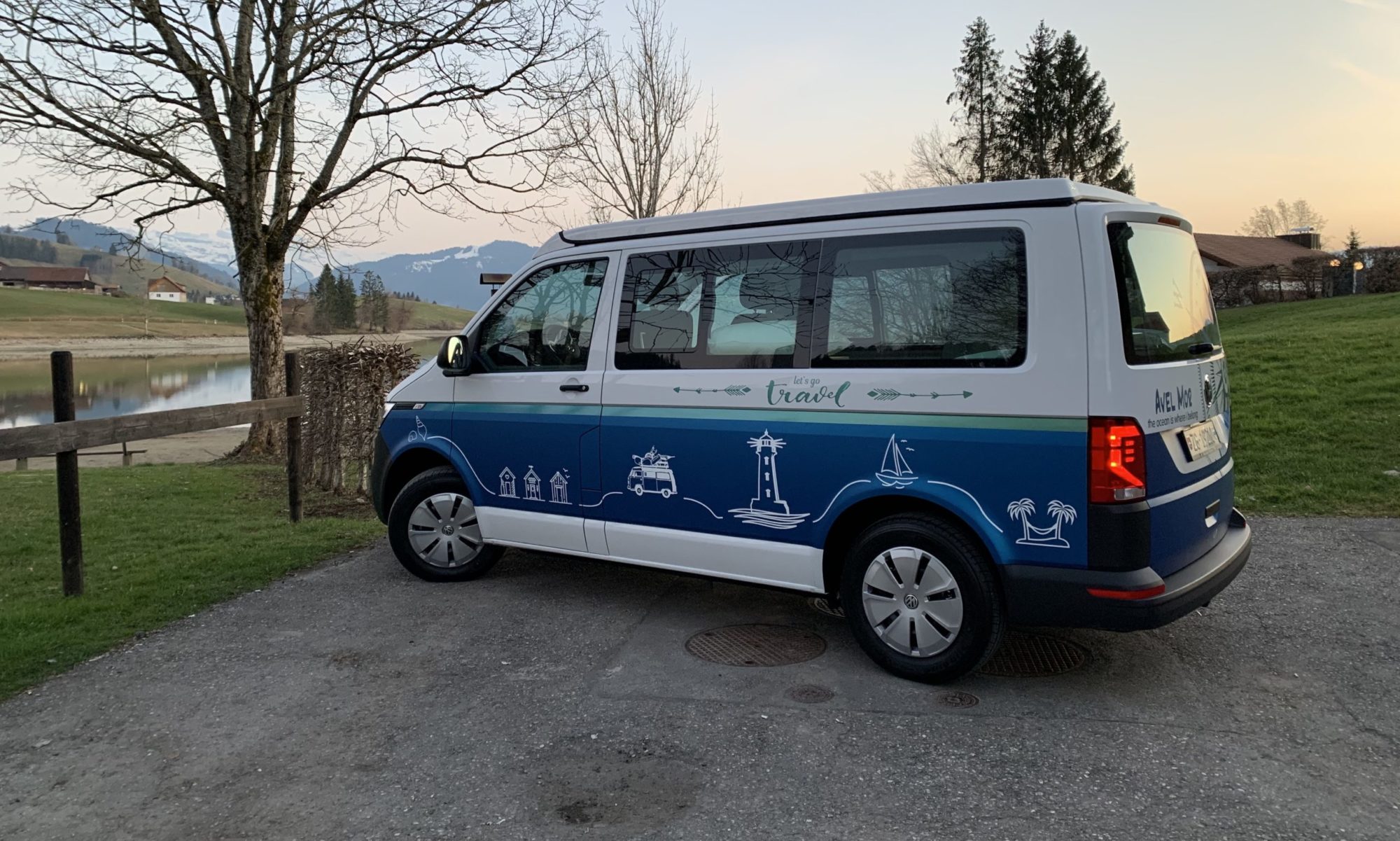21 – 27 August 2021
This is my first of two sailing weeks. Granville is still located in Normandy and you can see Mont Saint Michel far away in the bay. The wind is strong in the morning and we have to leave well before 9 o’clock as water is descending and the tidal difference is pretty high here at the northern coast of Brittany. The marina of Granville is actually a big pool, so that the boats have still water under their keel at low tide. Our draft (mininale Wassertiefe, die nötig ist, um nicht aufzulaufen) is 2m30 so we need a minimum of water of 2m40 to be safe.
Even though the sun set wonderfully last night now clouds have taken the lead and once we get out of the harbour the wind gusts really make the boat jump forward. On top the groundswell (Dünung) causes considerable waves. I have not been sailing like that for many – MANY – years! Once out at sea the waves get more regular and smaller and we take course towards the island Les Chausey. This is a small French island south of the Channel Islands. Because of Covid we cannot go to the Channel Islands and on top there is no time.
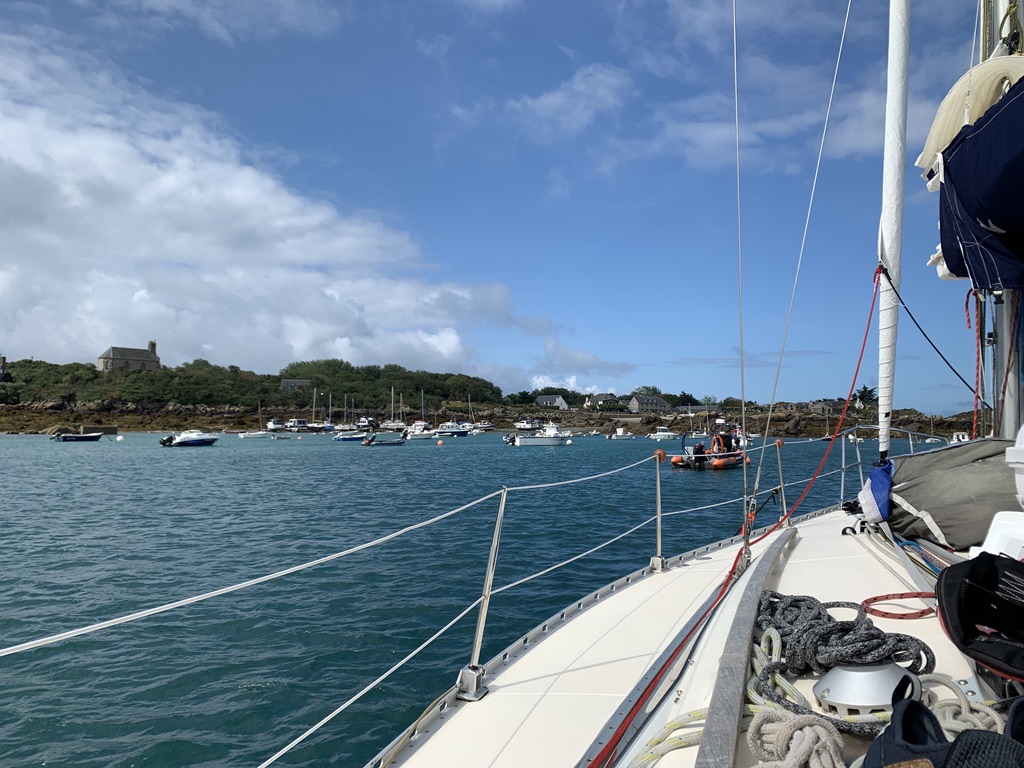
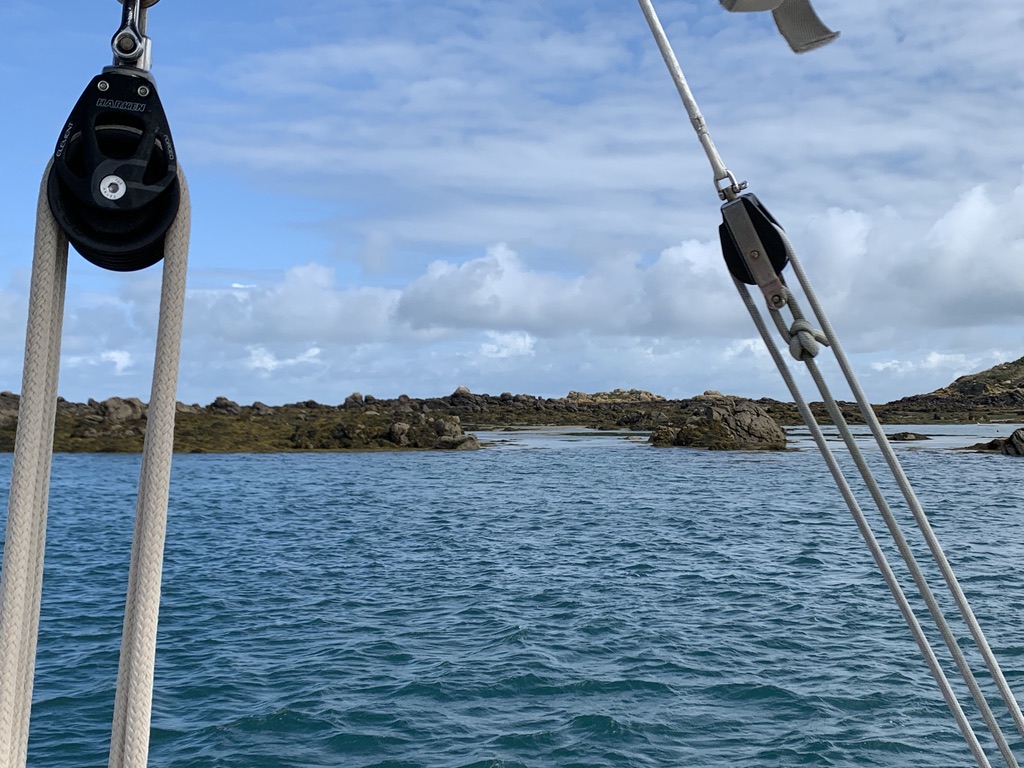
Once we get into the channel and moor at a buoy for lunch the sun comes out. This is beautiful. We watch the water reclining and I find it amazing how fast this is happening. Within half an hour or so water and we with it have gone down about a metre. Once again out on open waters crew-member Sophie gets really sick. This isn’t a surprise for me with this groundswell and waves. It’s rather a surprise that I’m NOT sick. We take course to the small harbour of Saint-Cast-le-Guildo, past Mont Saint Michel in the far distance. There is a big three-masted ship sparkling for a moment when the sun finds its way through the clouds. It’s beautiful.
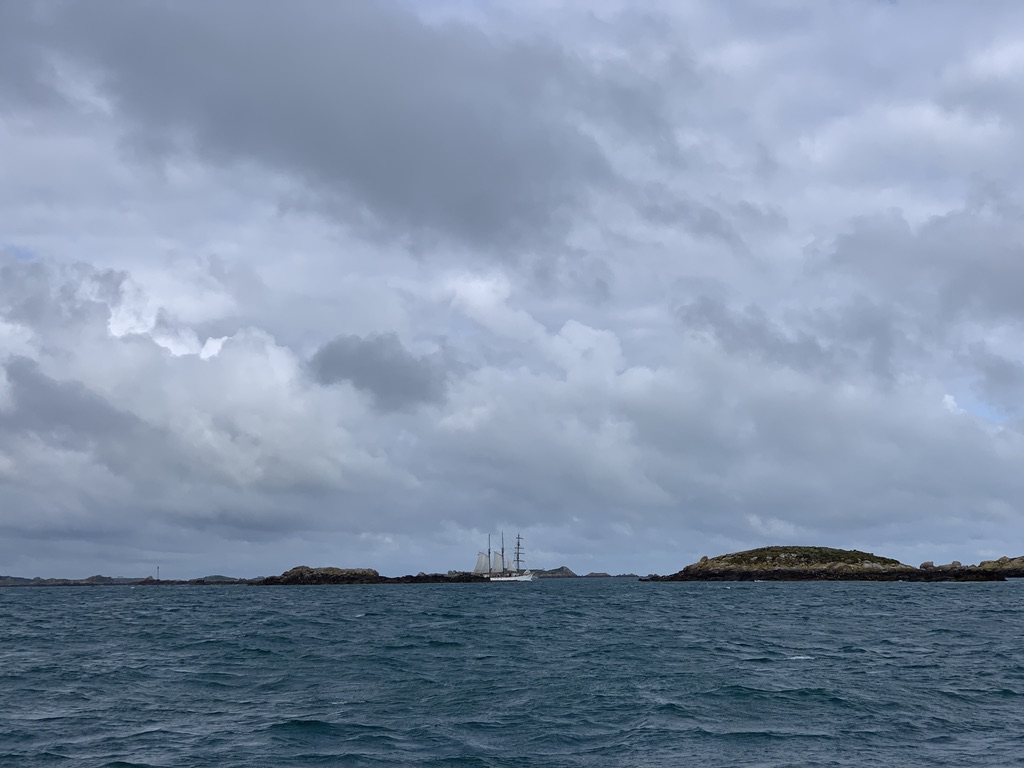
I am allowed to do the landing manoeuvre. We find out that four of the six Pen Duicks (Eric Tabarly’s boats) are in Saint-Cast-le-Guildo as Eric Tabarly would have turned 90 years this year.
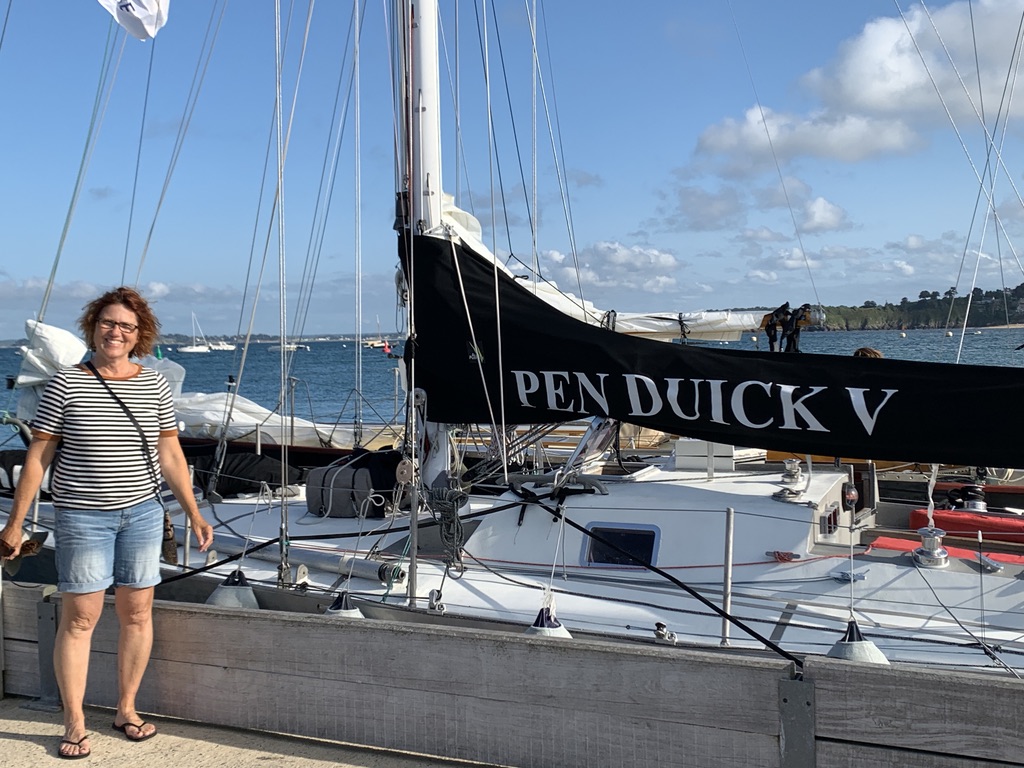
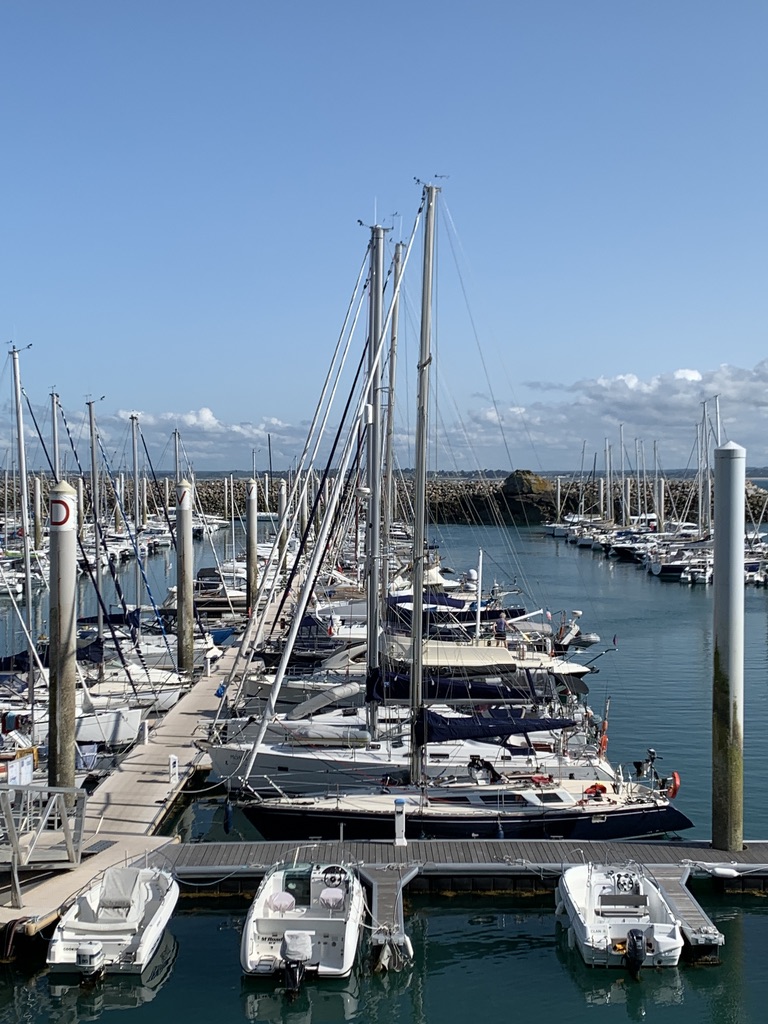
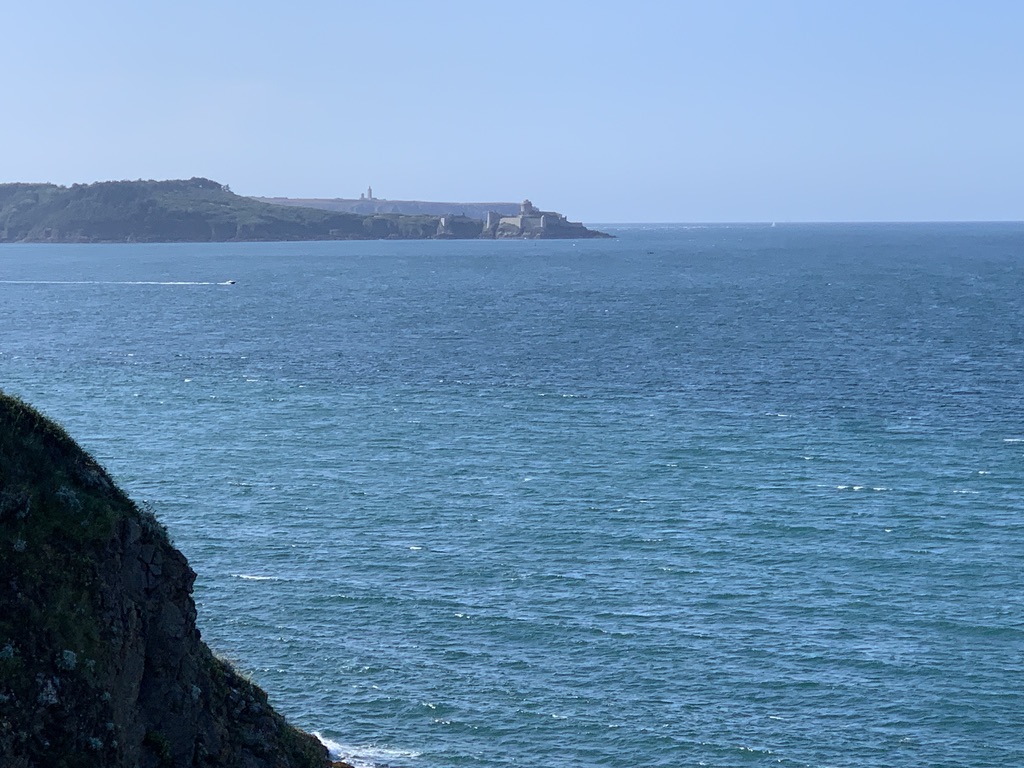
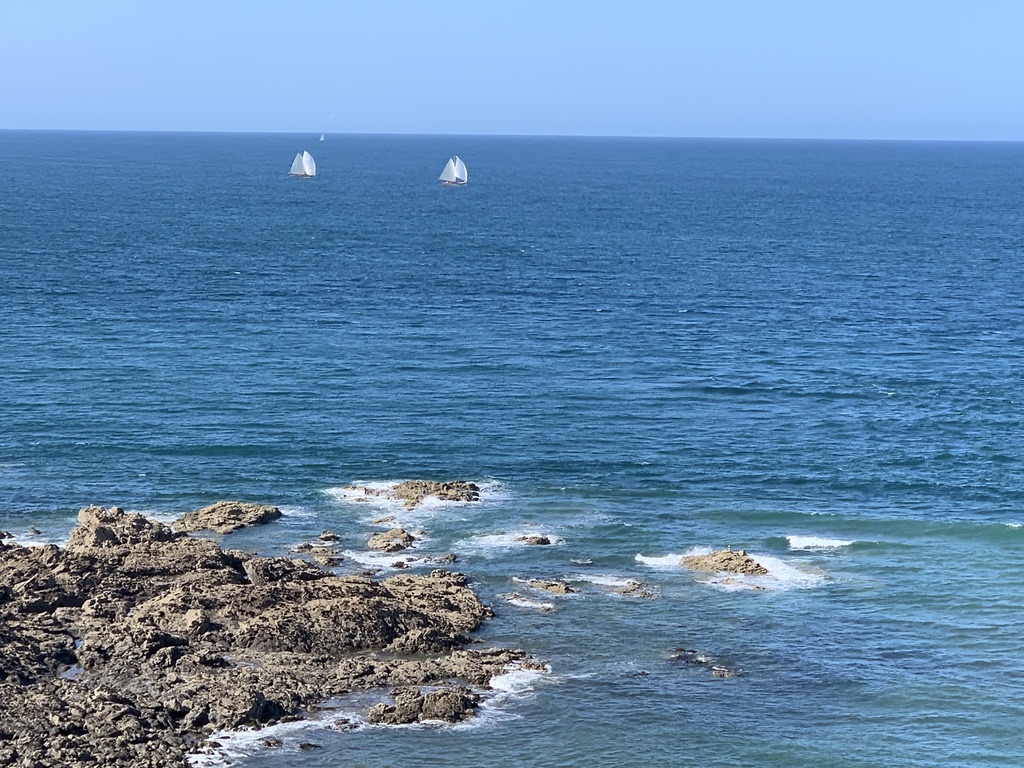
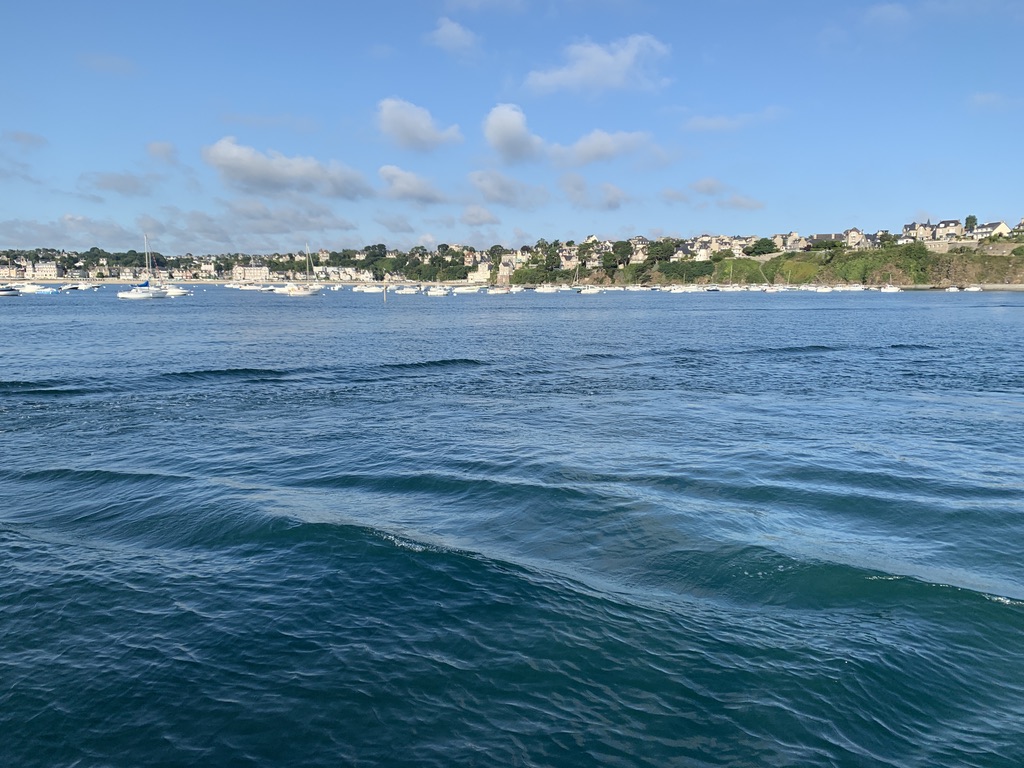
From Saint-Cast-le-Guildo we take course along the Côte d’Emeraude to Saint-Quai-Portrieux. We see Cap Fréhel and its lighthouse and Fort de la Latte from afar. As we arrive rather early and its low tide we take a detour around some light beacons (Leuchtfeuer). Now, they are poised on little island. Once the tide comes in, they will be poles portruding from the water.
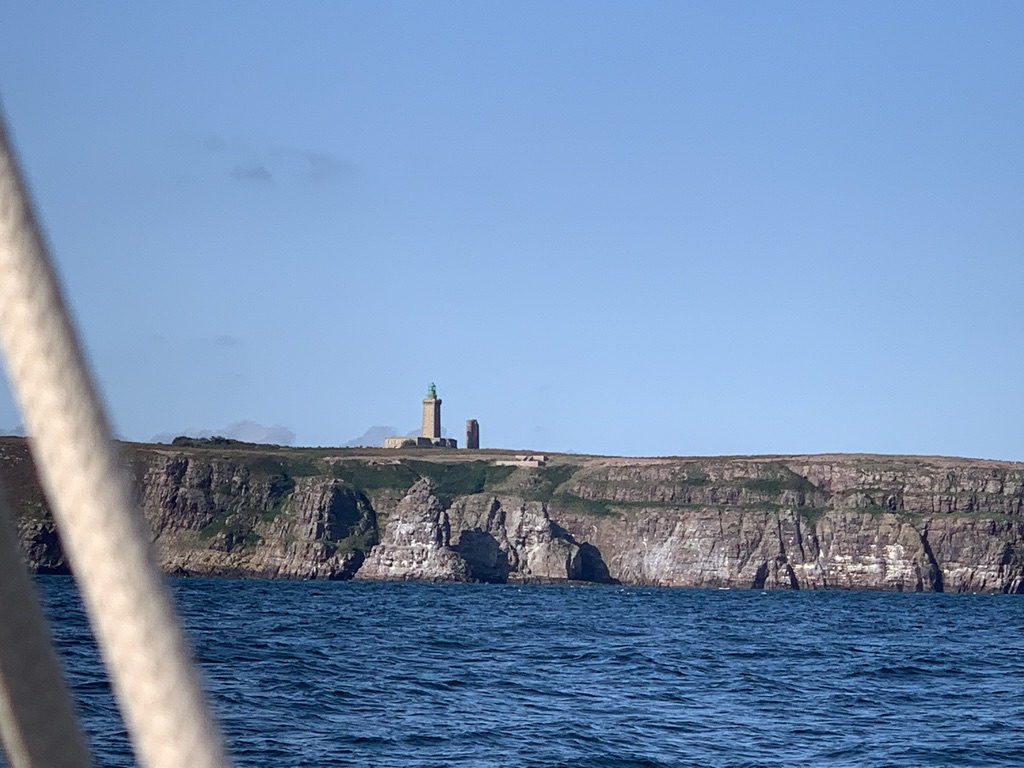
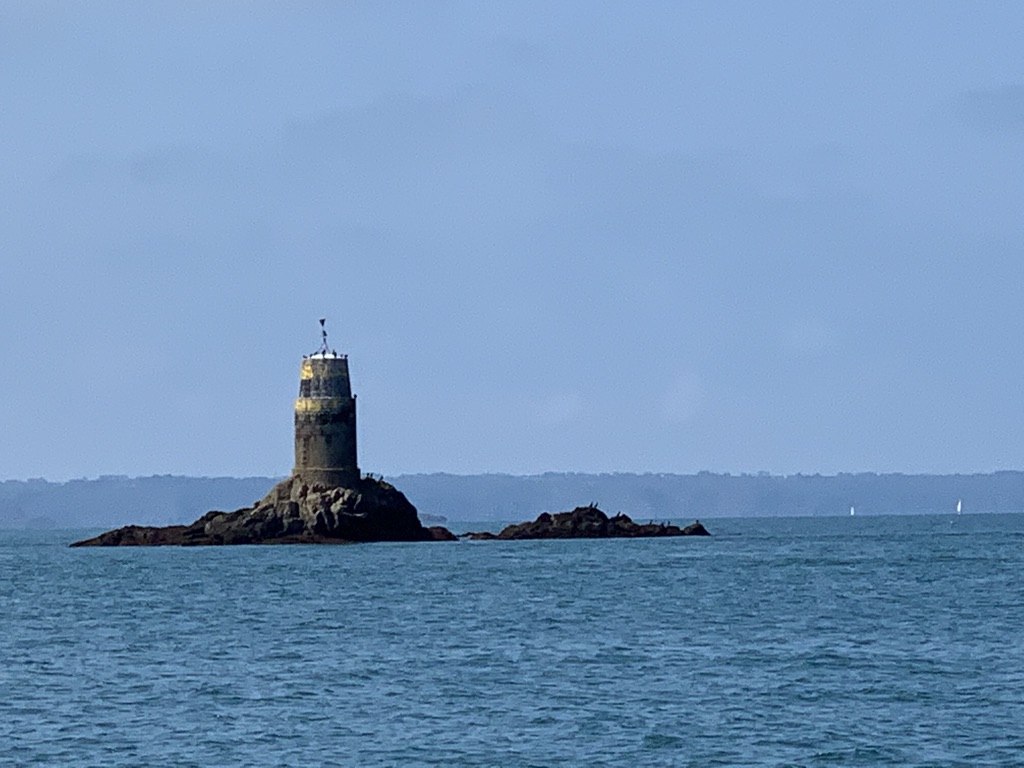
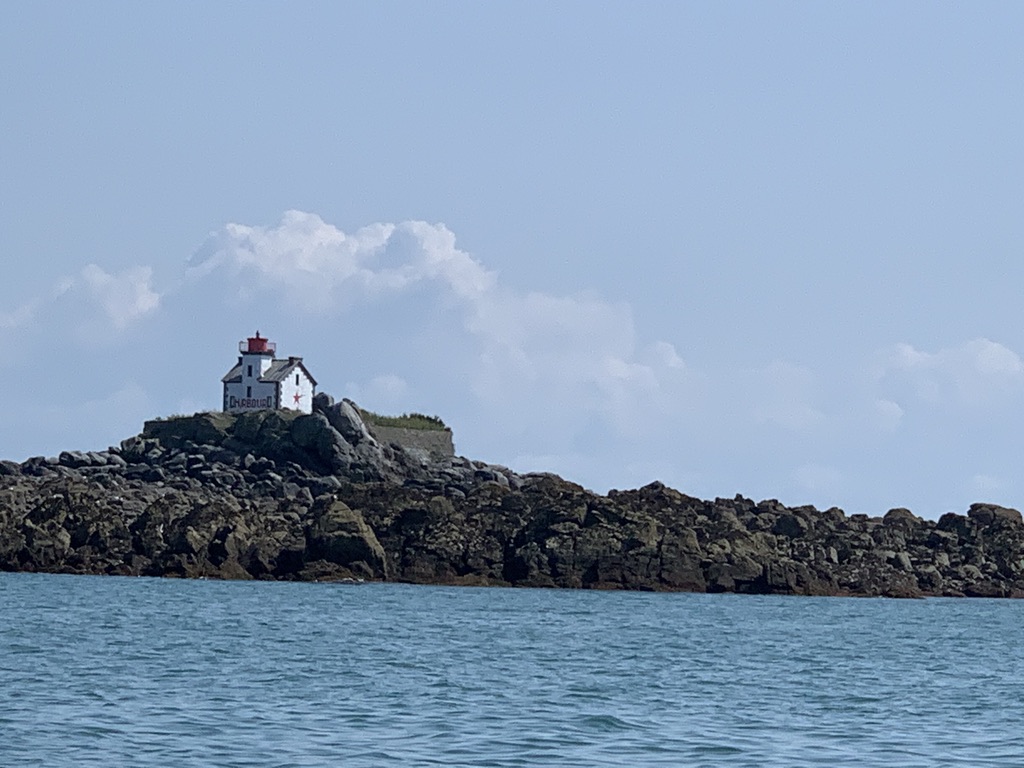
It’s full moon and nobody sleeps well during this night. When I go to the sanitary block at 4 in the morning I see that it’s low tide again (about 12 h later) and the piers leading down to the cat-ways are illuminated in blue. It looks beautiful.
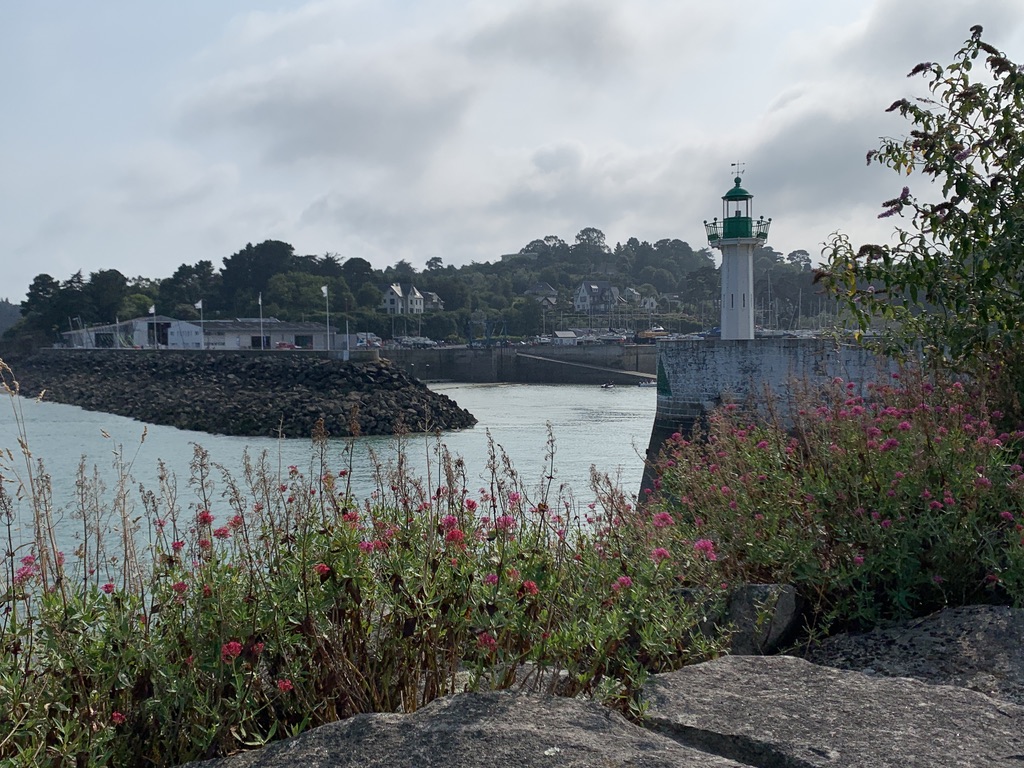

When leaving in the morning I am allowed to put AVEL to sea and once out of the harbour I am again surprised at the dimensions of the waves! It doesn’t look much on the pics but once you are in that nutshell and thrown around to all sides, and spray wets you each time the one steering does not surf the wave in the right angle, well, then things look different, especially when sailing close-hauled (hart am Wind). Baaang, the boat comes down being lifted from a wave, and we are getting sprayed again.

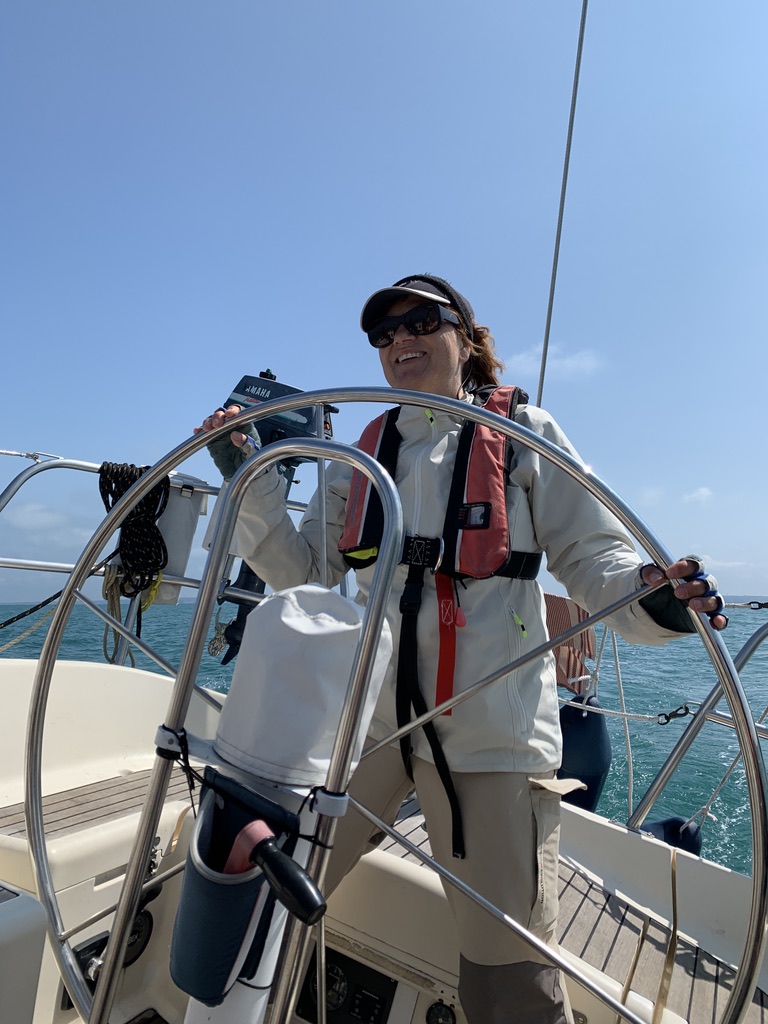
Just before lunchtime we change course and sail into the Rade de Bréhat and around the eastern and southern shores of the island. For a moment the sea is calmer here as we are not as exposed to the wind here as much as on the open sea. The current pushes us gently forward, though and we almost surf on it – or the landscape is gliding past us. It’s extremely beautiful and we sit there with just the foresail hissed silent and in awe in view of this sheer beauty.
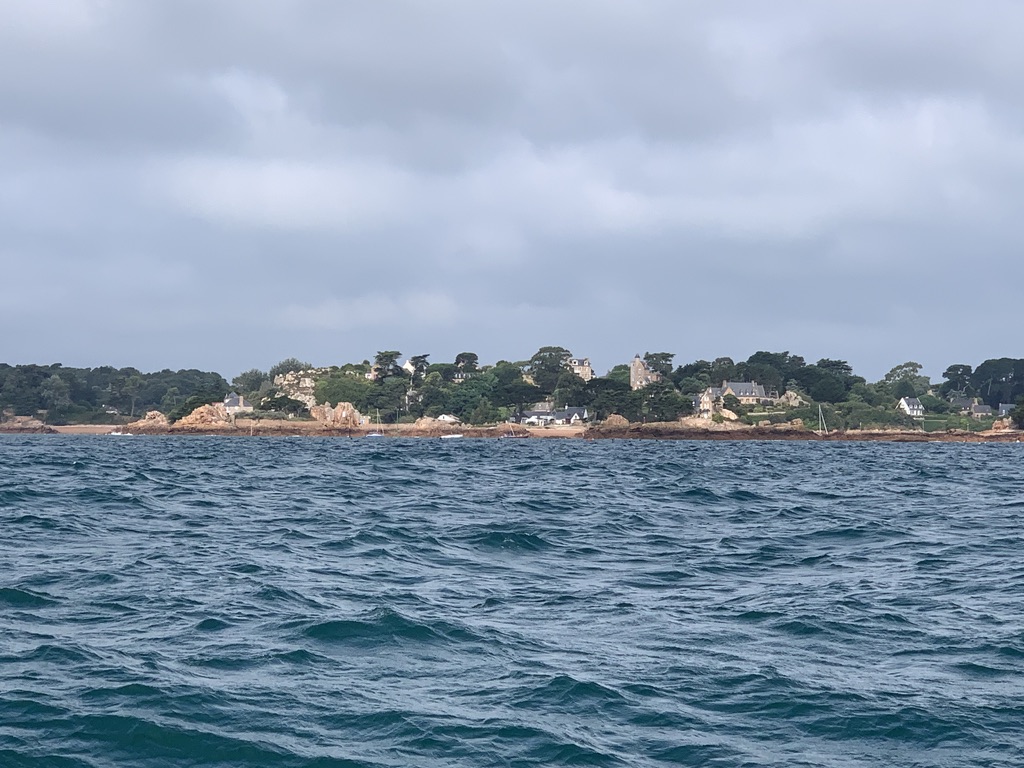


There are no cars allowed on Bréhat. The beaches, the stones seem to have a reddish tint. When we get to the foremost southern point of the island we have to veer the boat and that very moment the sea is not peace and beauty but beauty and lots of work, as we have to get along the western shore of Bréhat. We have to tack (aufkreuzen) several times. We moor up again at one of the buoys and – as it is Bréhat – doing so costs € 6.
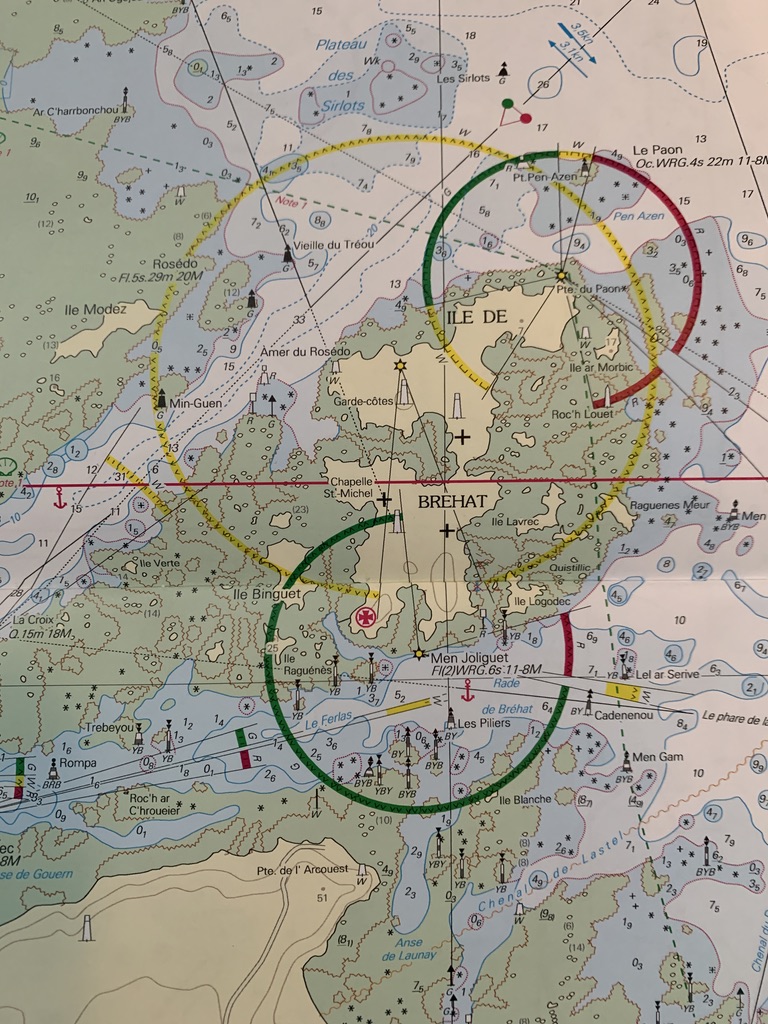
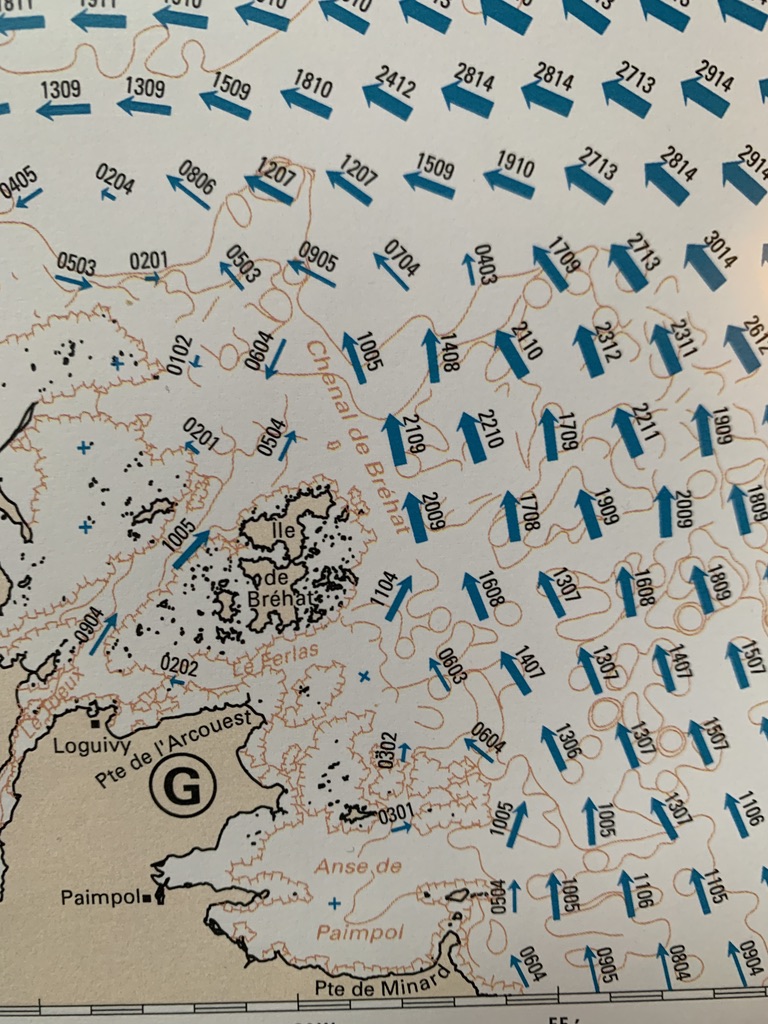
It’s a short lunchtime before we hiss the sails again and sail out to open waters – and there it beats again, 26 knots and the swell is considerable. Another three to four hours beam reac (Halbwind) and close-hauled (am Wind) before we get to the entrance of the river Le Jaudy that will take us seven miles inland to the little twon of Tréguier. The current is rising now and shove us into the fjord. We have the main sheet up but the second reef.
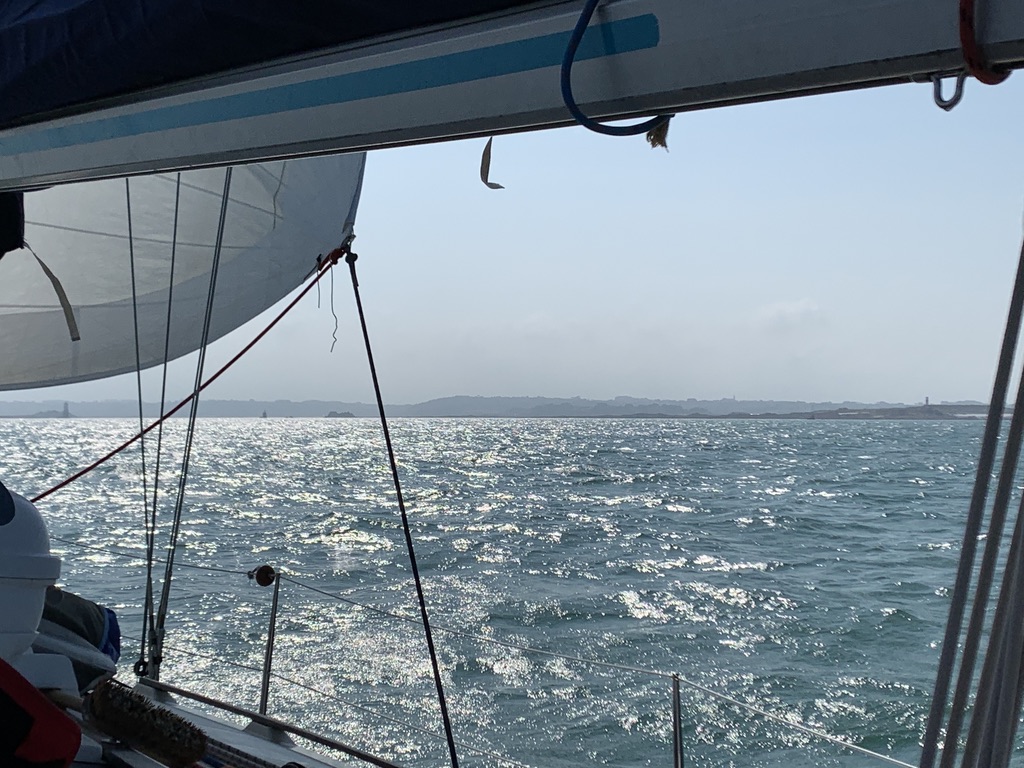
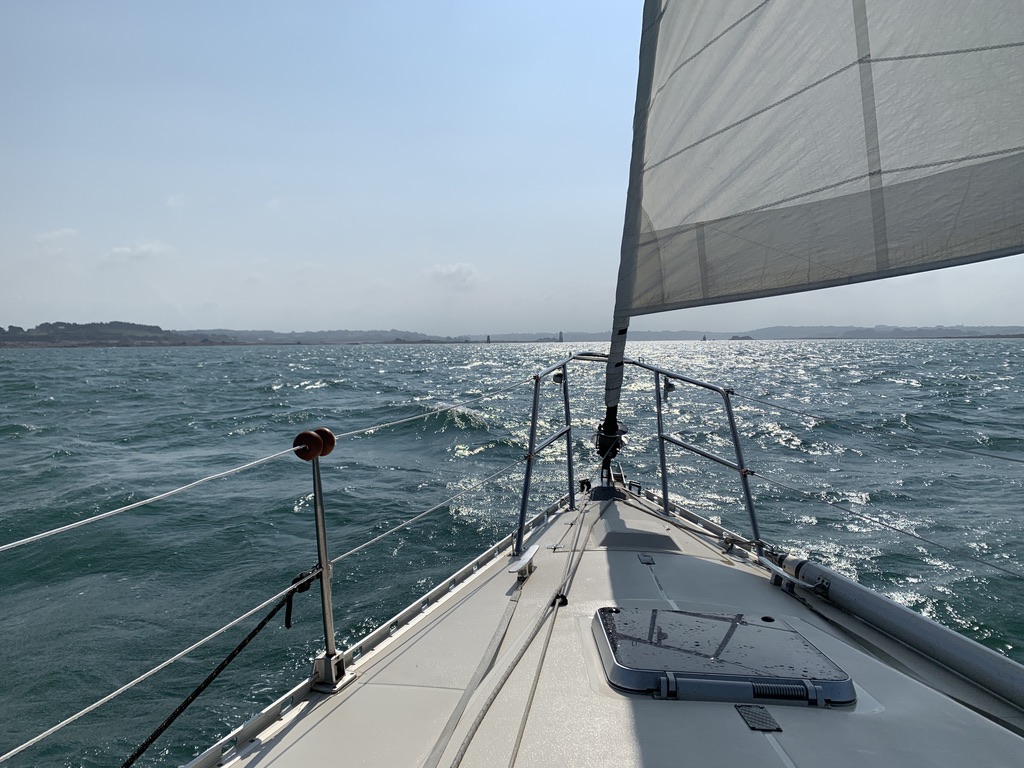

With that current at aft (achtern) it’s truly not easy to get into the berth. Again and again I’m so astonished at the sheer force of nature when looking at the tides.

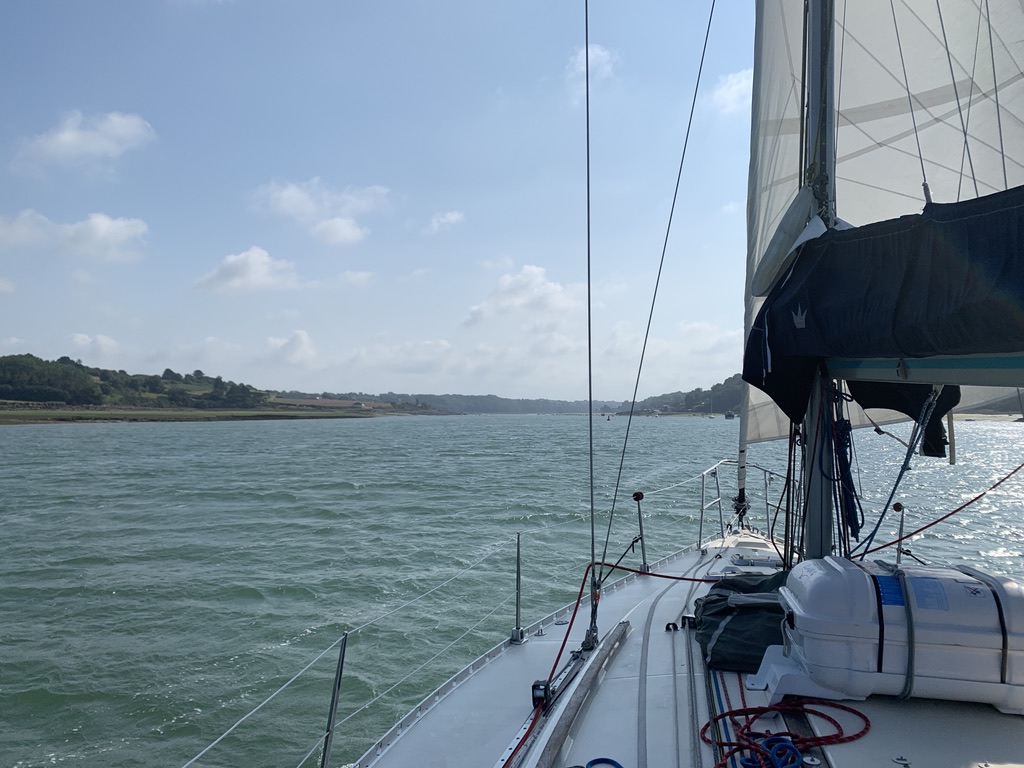

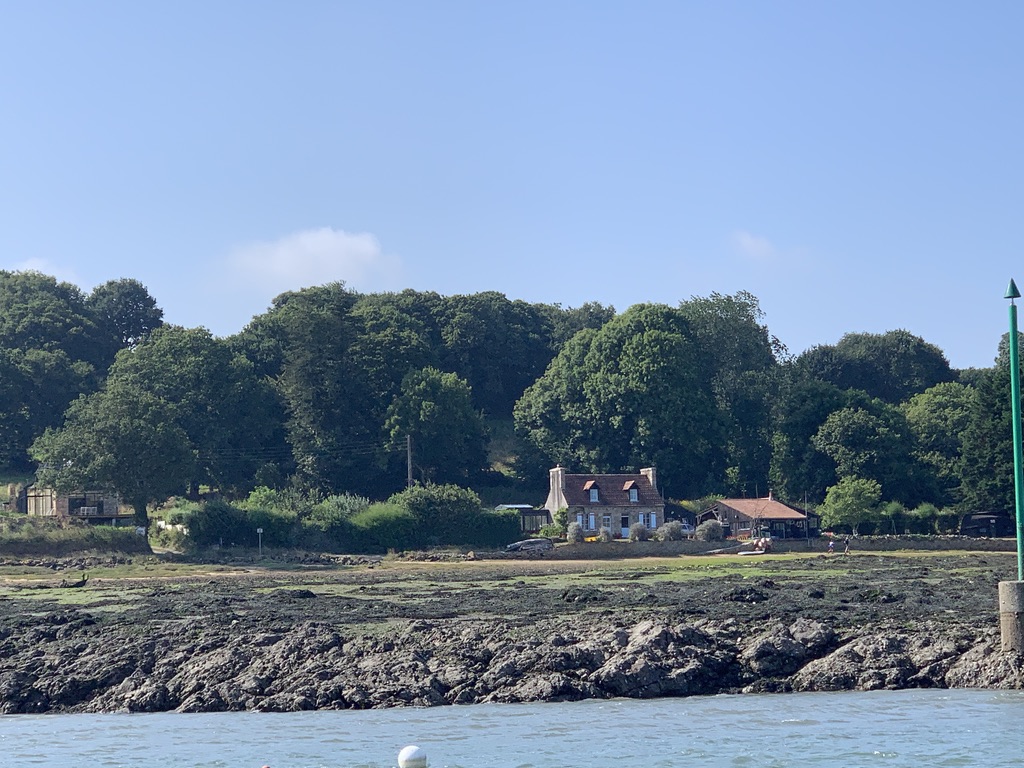
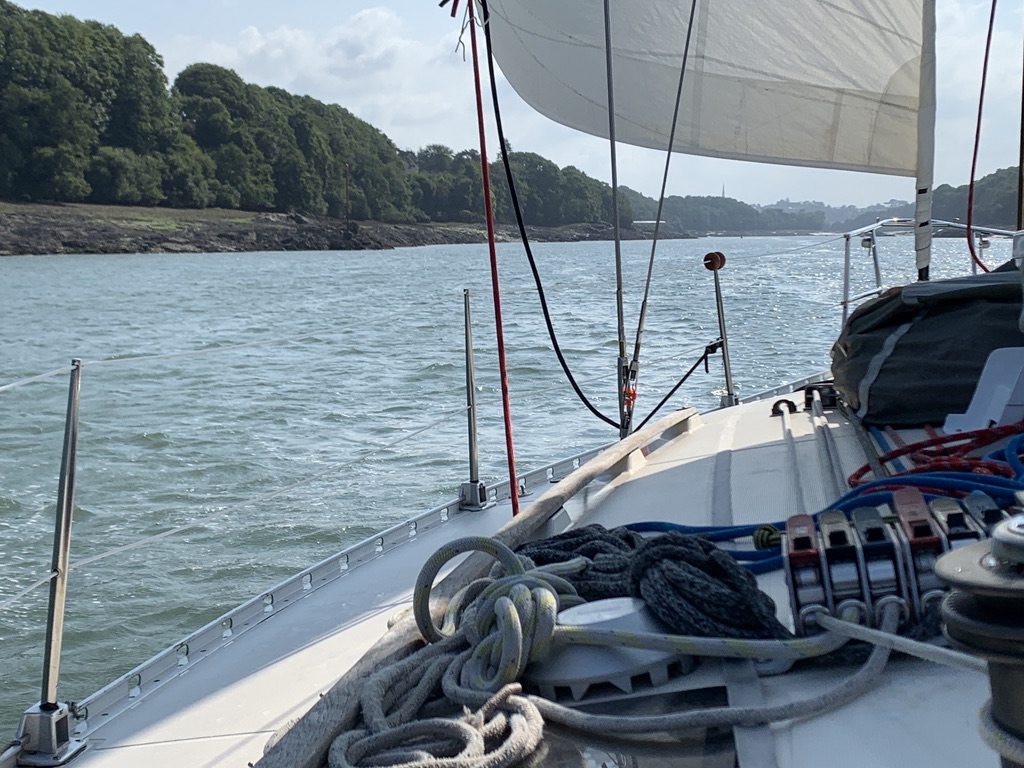
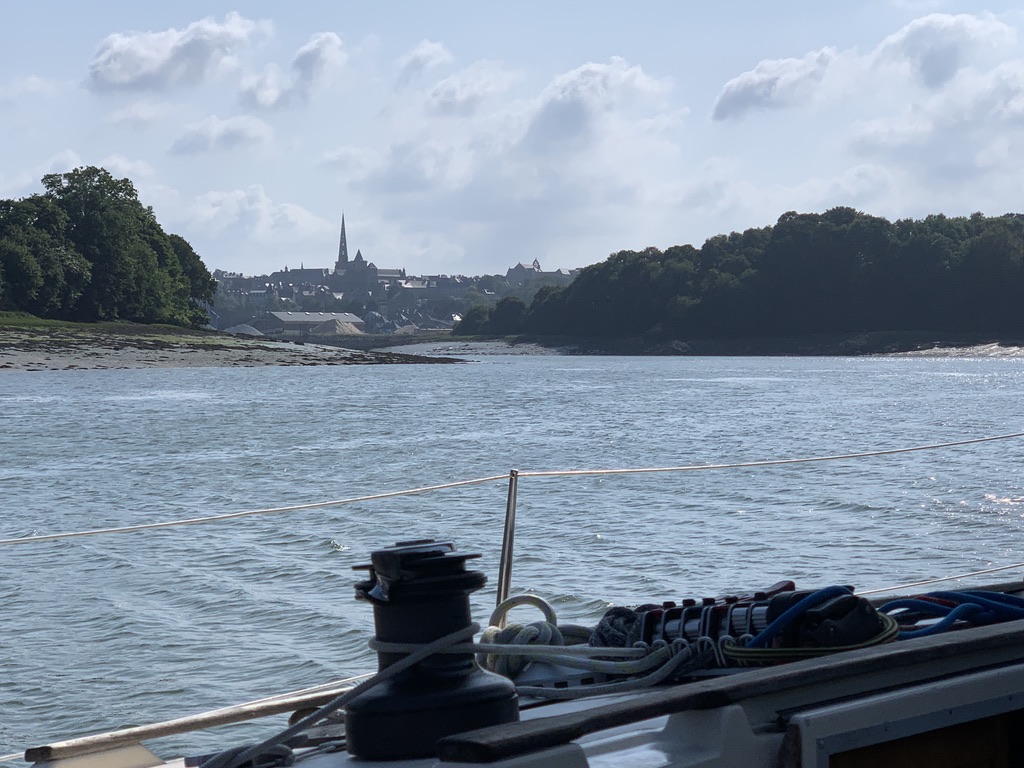
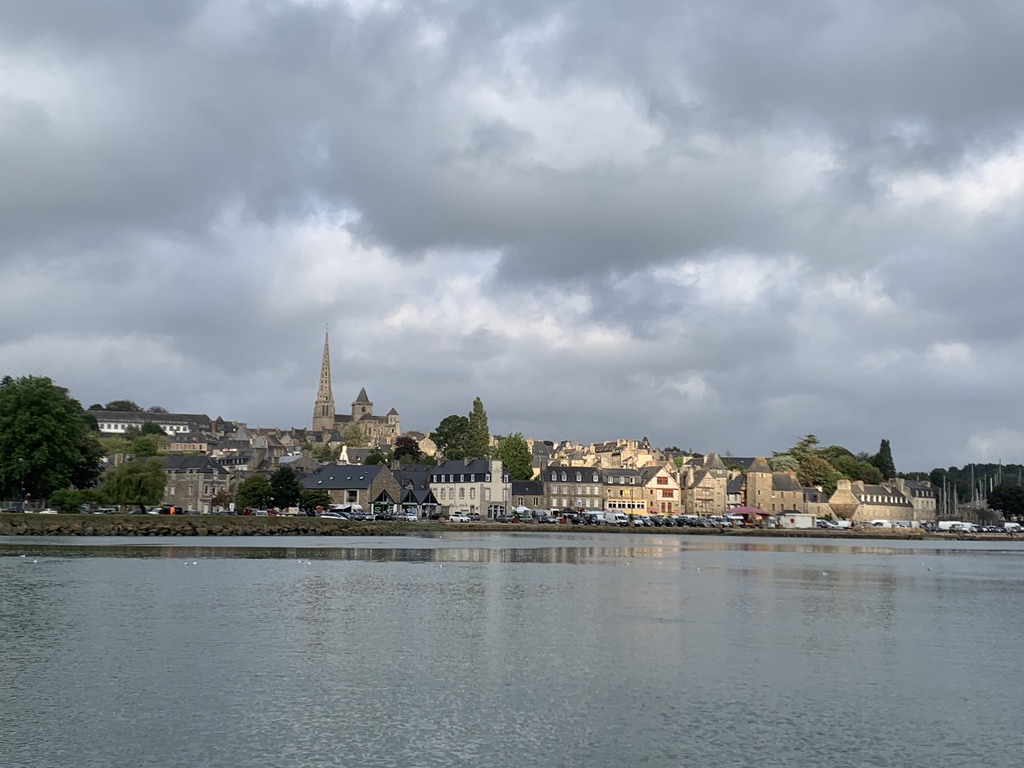
The current that takes us out of the fjord in the morning is not as strong as it was the day before. It’s rather cloudy and once out at sea the sea is rather calm. We have to steer broad reach (Raumschotkurs) which is not my favourite one as it can be tricky to sail it and avoid gybing (halsen). And gybing can be dangerous when the boom comes over uncontrolled. Yet, I notice that I’ve made progress and am much more aware of courses and sheets and anyhow anything on deck.
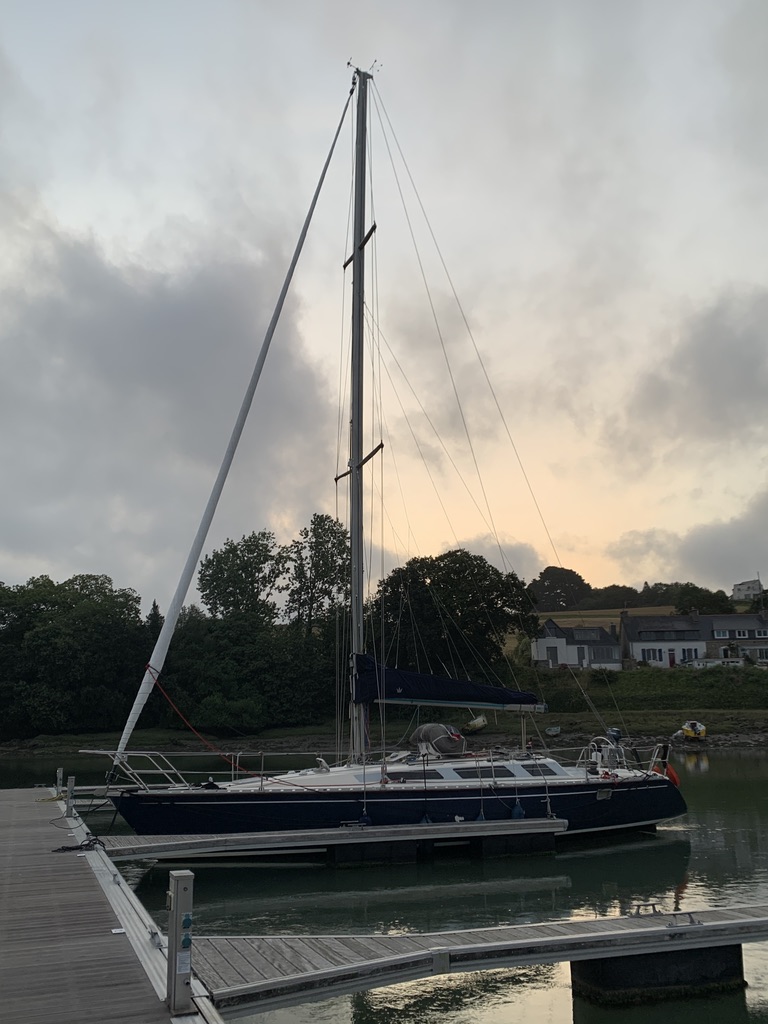

The landscape is beautiful again. This now is Brittany’s Côte de Granit Rose, and truly, the stone formations – most of which have names – are all reddish. We get to the small seaside town Trébeurden and have to moor at a buoy to wait until the water has risen as high as we can manoeuvre into the port. I set out for a short walk on the island ‘Île Milliau’ with its beautiful views on the port and on the sea.
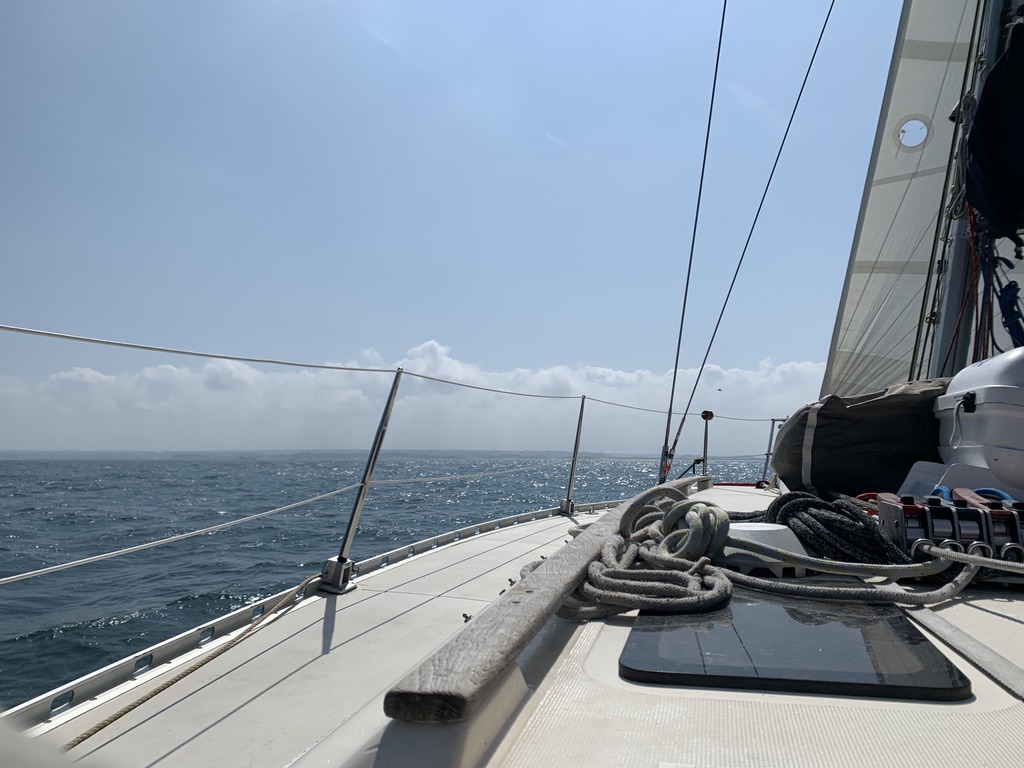
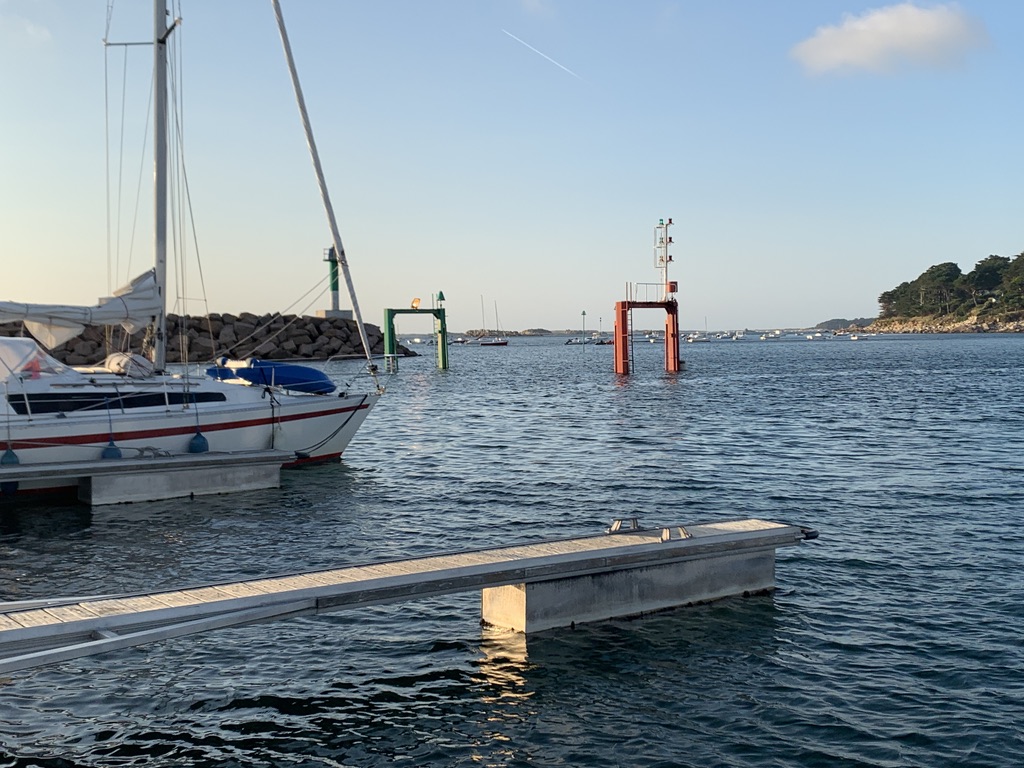
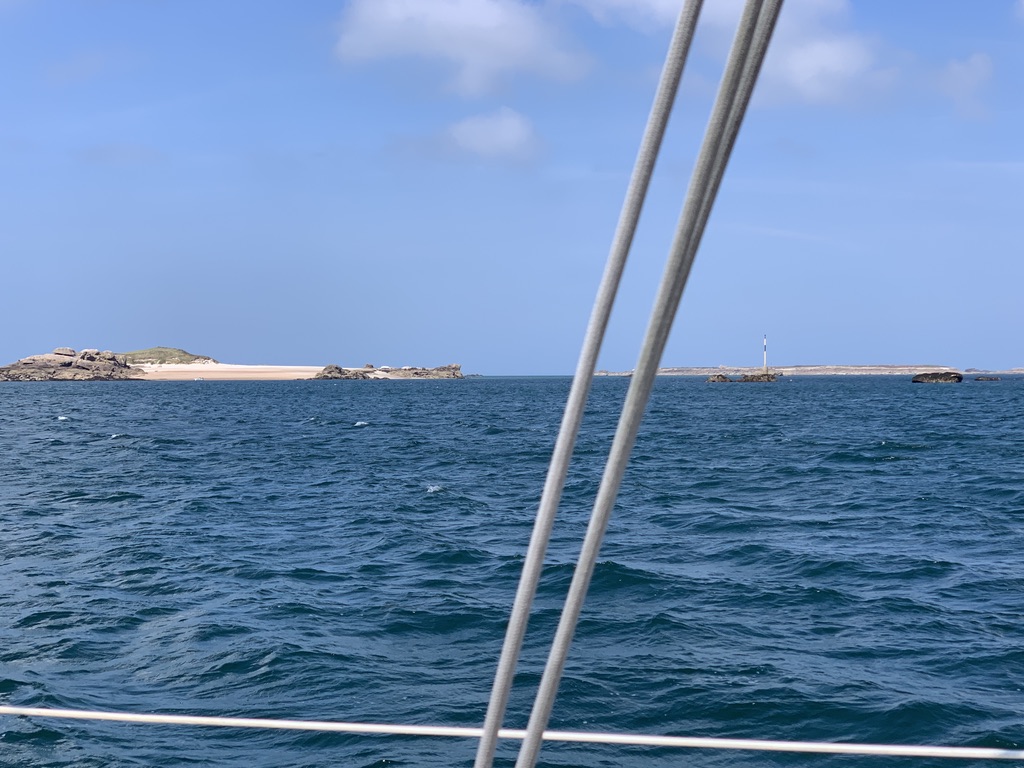
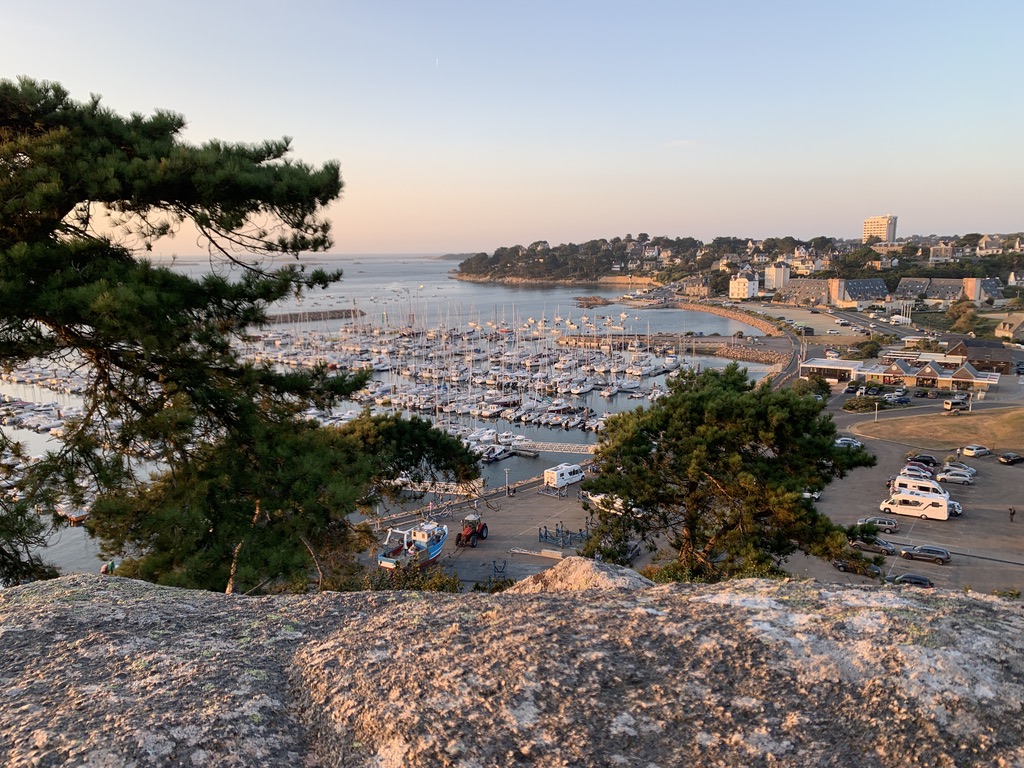
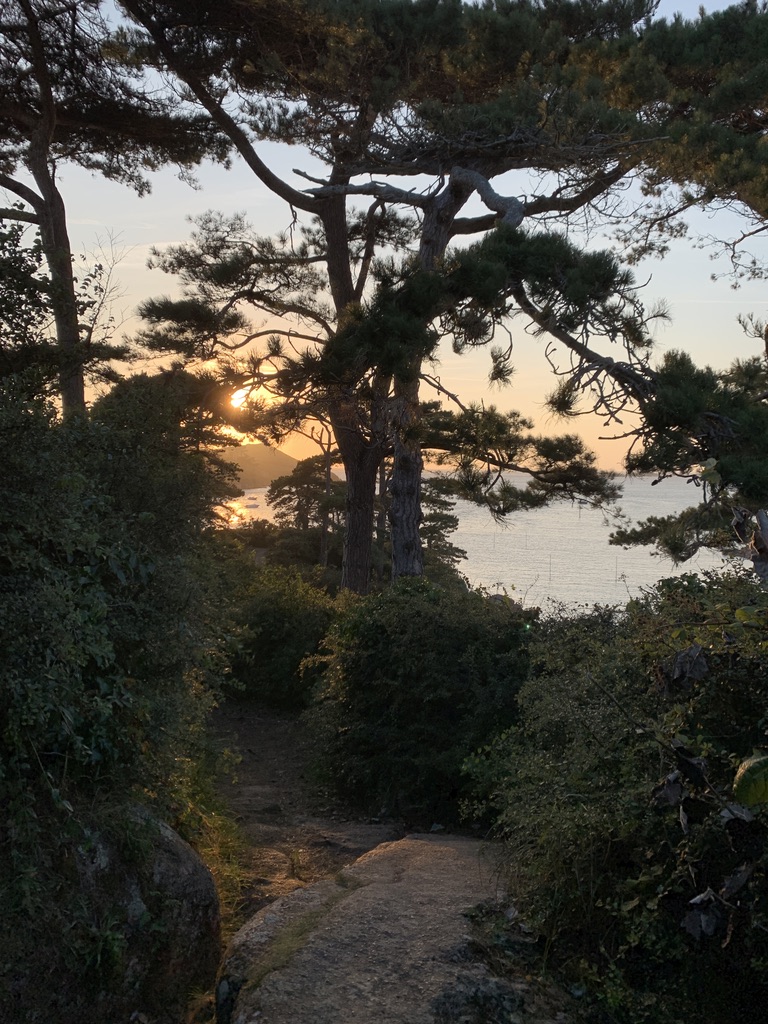
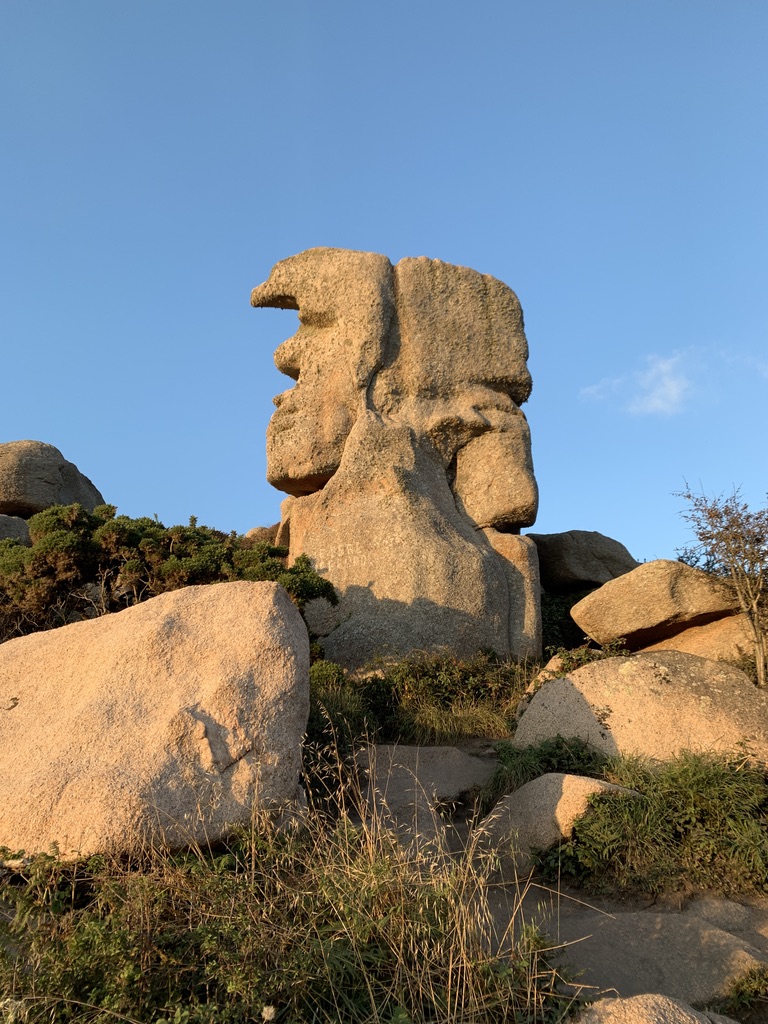
This is our last day at sea. Again, the sun welcomes us. The wind has becalmed considerably. It’s for hours on end that we sail broad reach until we get the near Roscoff, our destination. But before we go into the harbour we sail around the nearby île of Batz. It’s a narrow channel between mainland and the island and it’s rather tricky to avoid all the rocks. The French call a single rock in their argot a “patate”, a “potato” and there are quite some potatoes around. Then we berth and tonight it is Denys who is serving Crêpes.
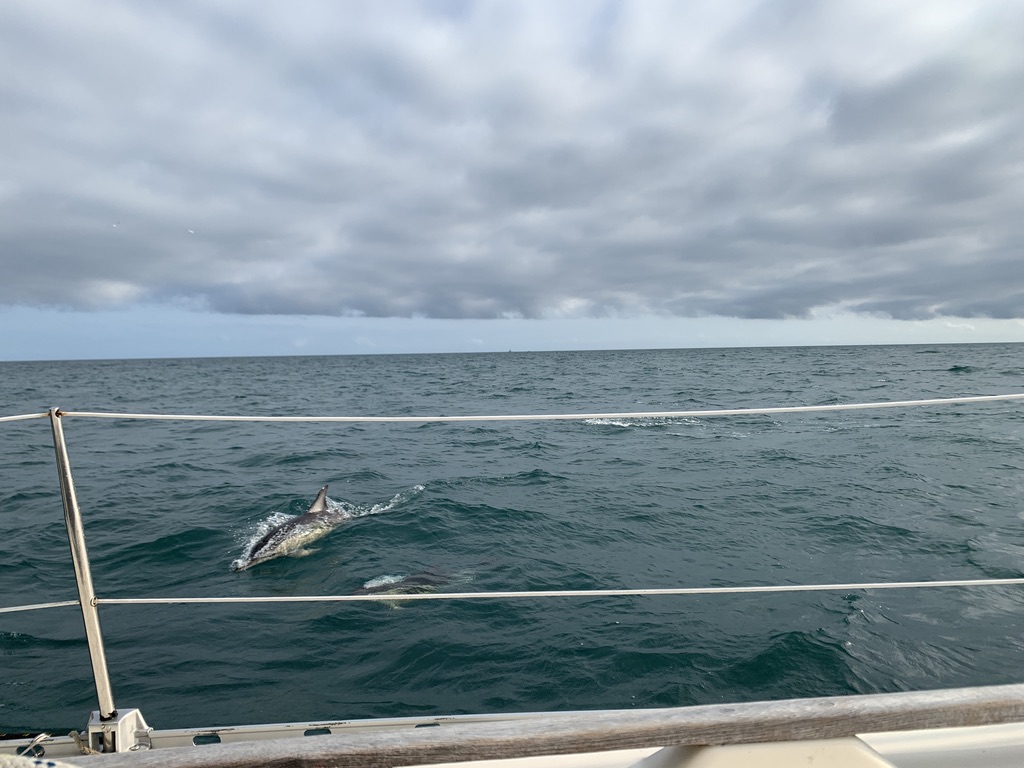
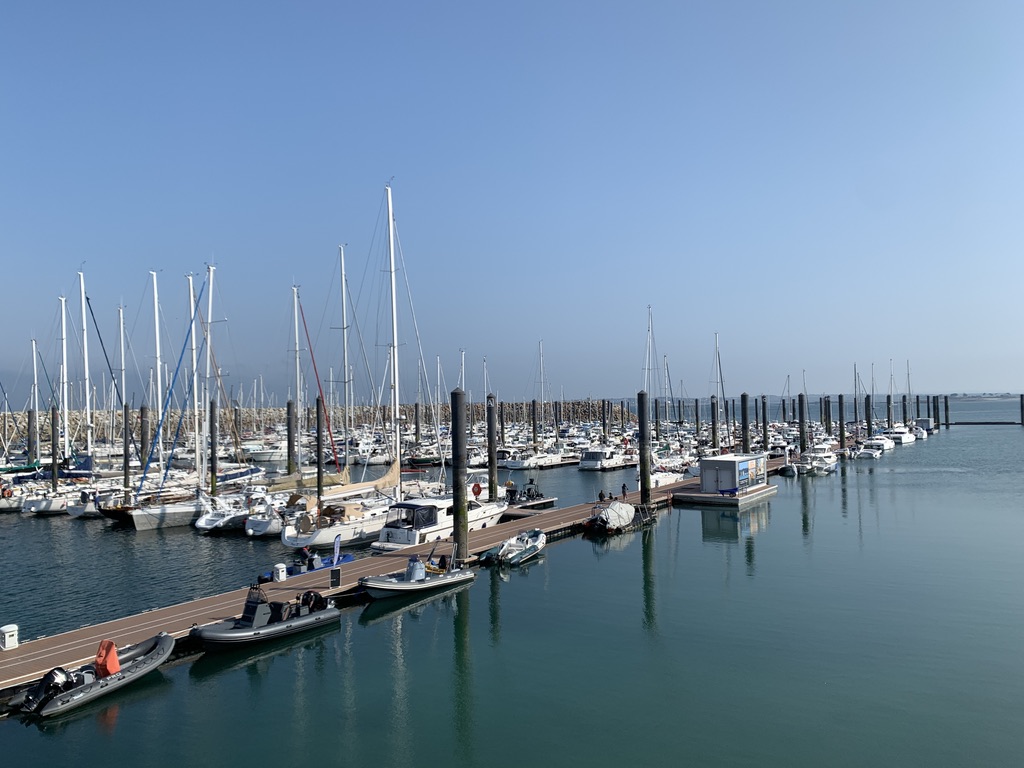

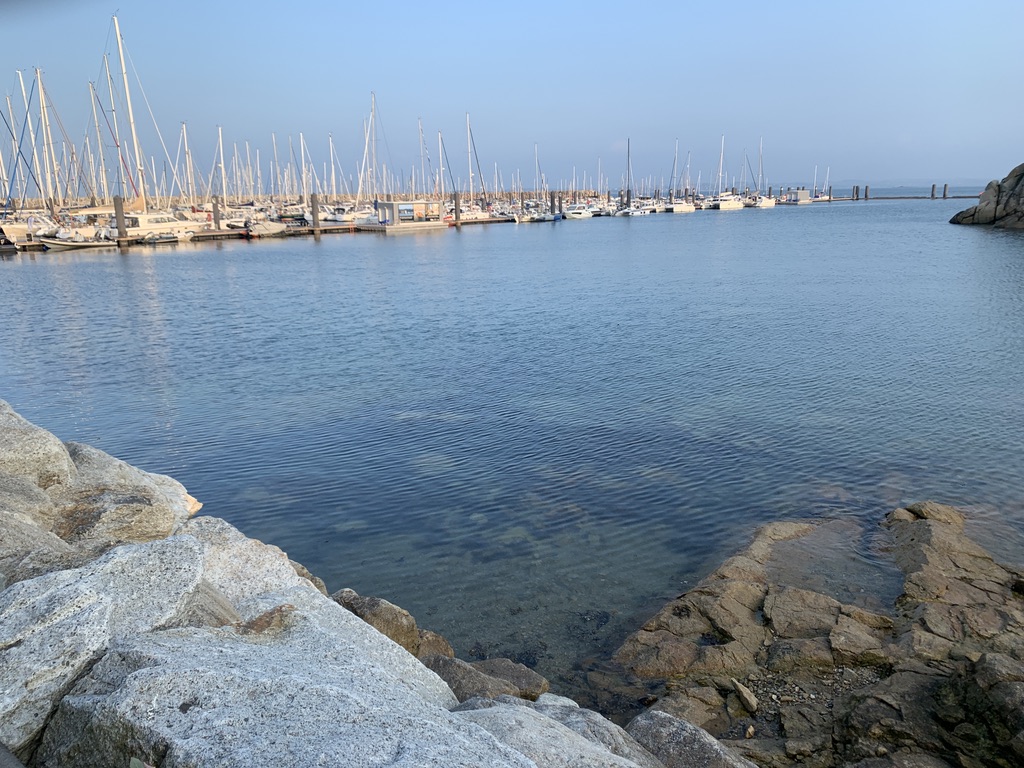

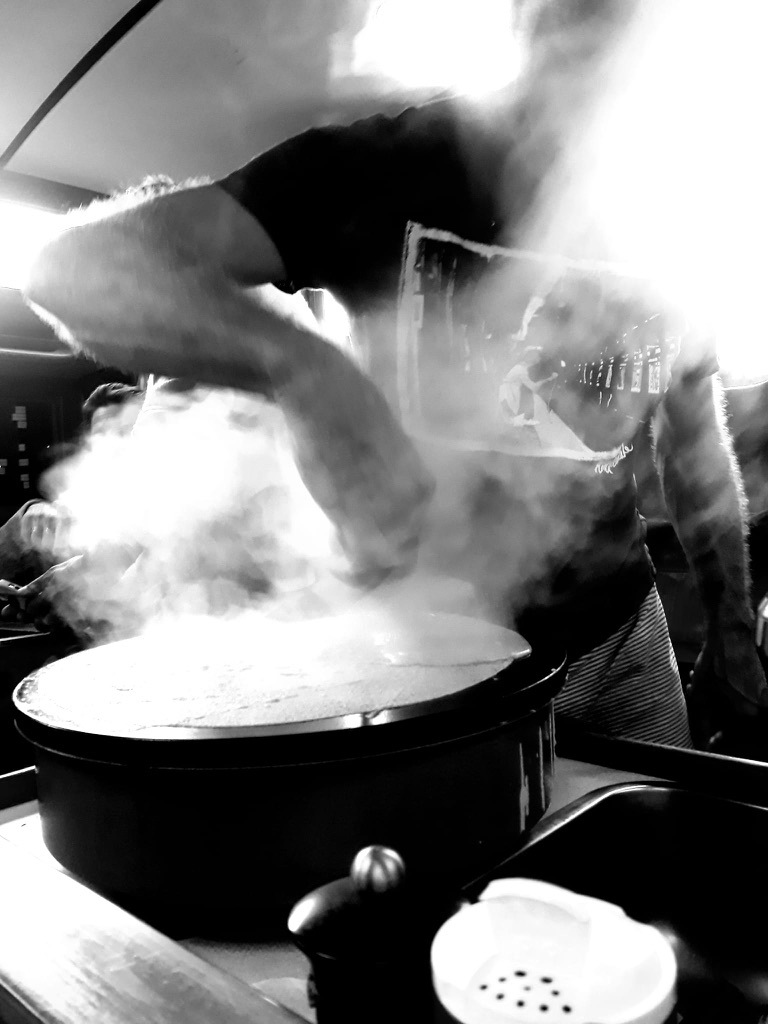
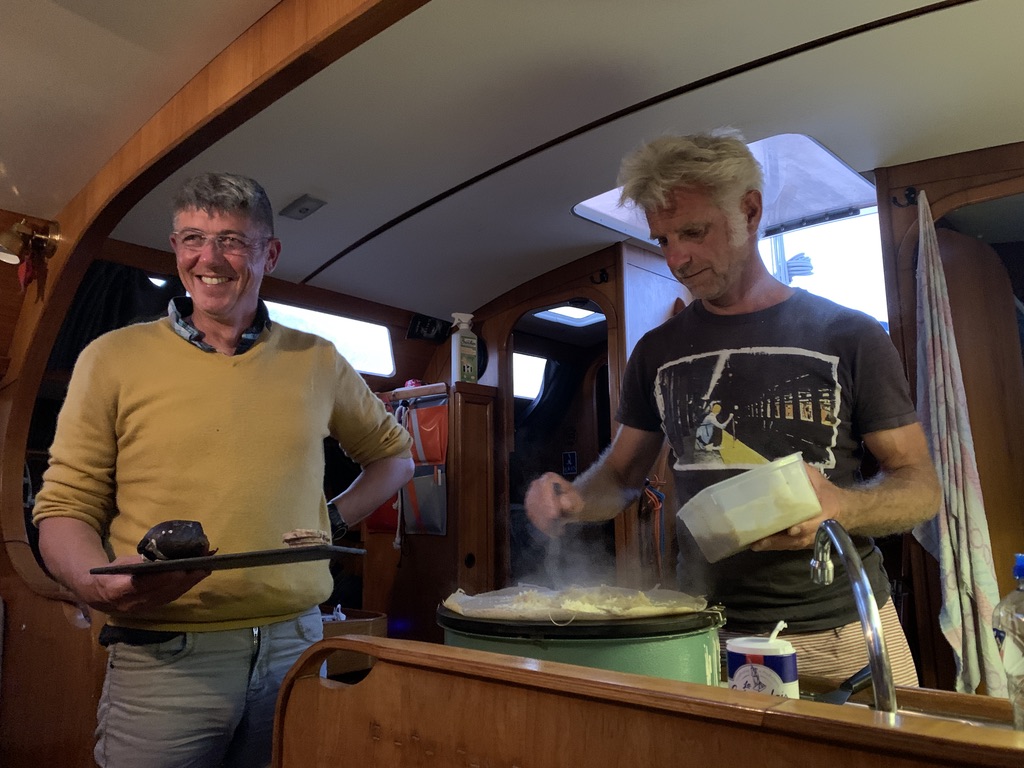
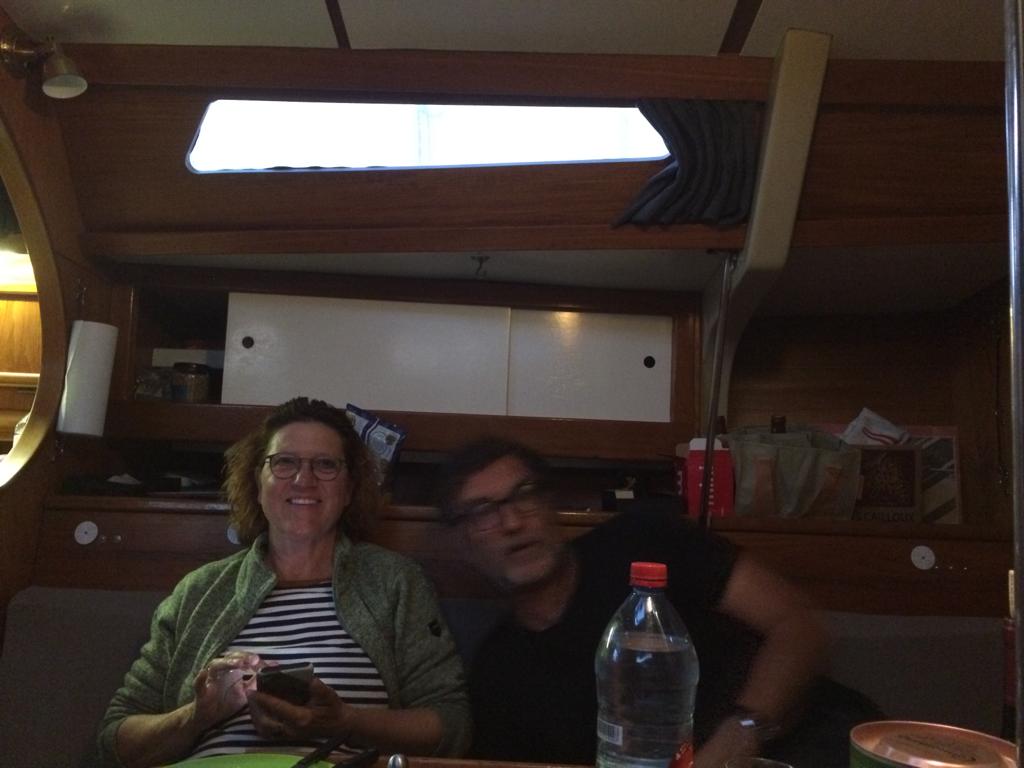
Friday morning, out at 9h again for a short sail into the Baie of Morlaix. Some sailing exercises, sunshine, patate, and ‘quickstop’. This is a technique to avoid collision when the one not having priority does not take any actions to avoid collision. It’s easy and very effective. Steer close-hauled, fall off and keep the wheel to windward as long as you want to. The foresail will alternately backwind while the main sheet will veer and gype alternately and thus you spin around again and again until you change the position of the blade. So, we practise this and then steer and berth in Roscoff for good.
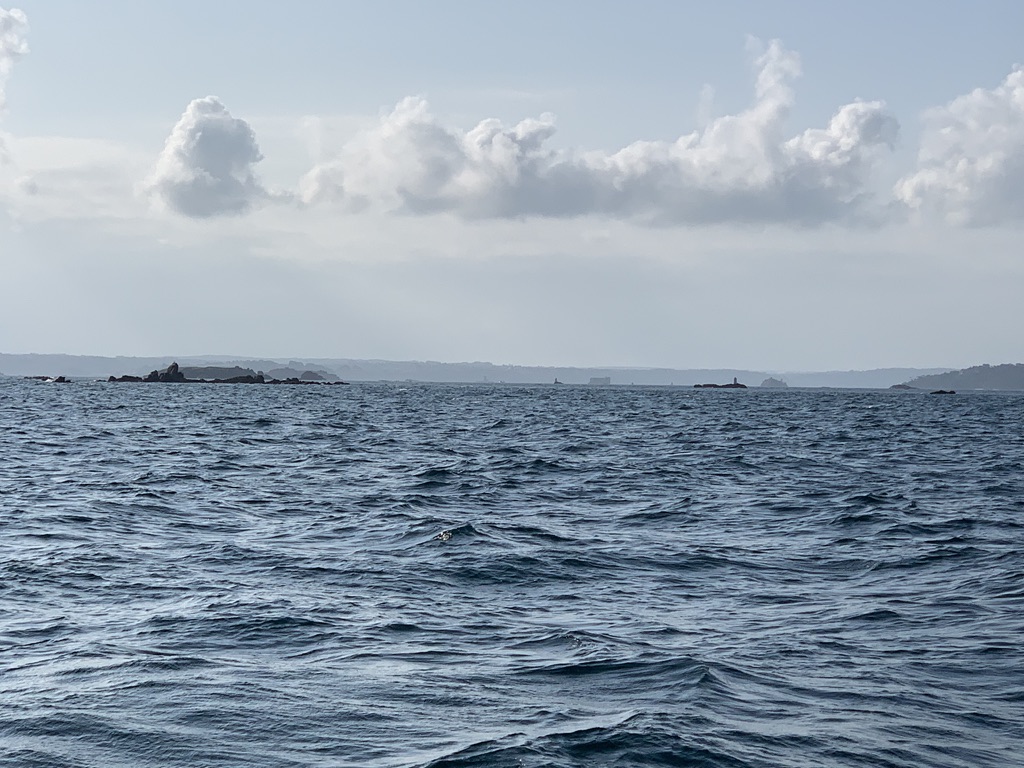
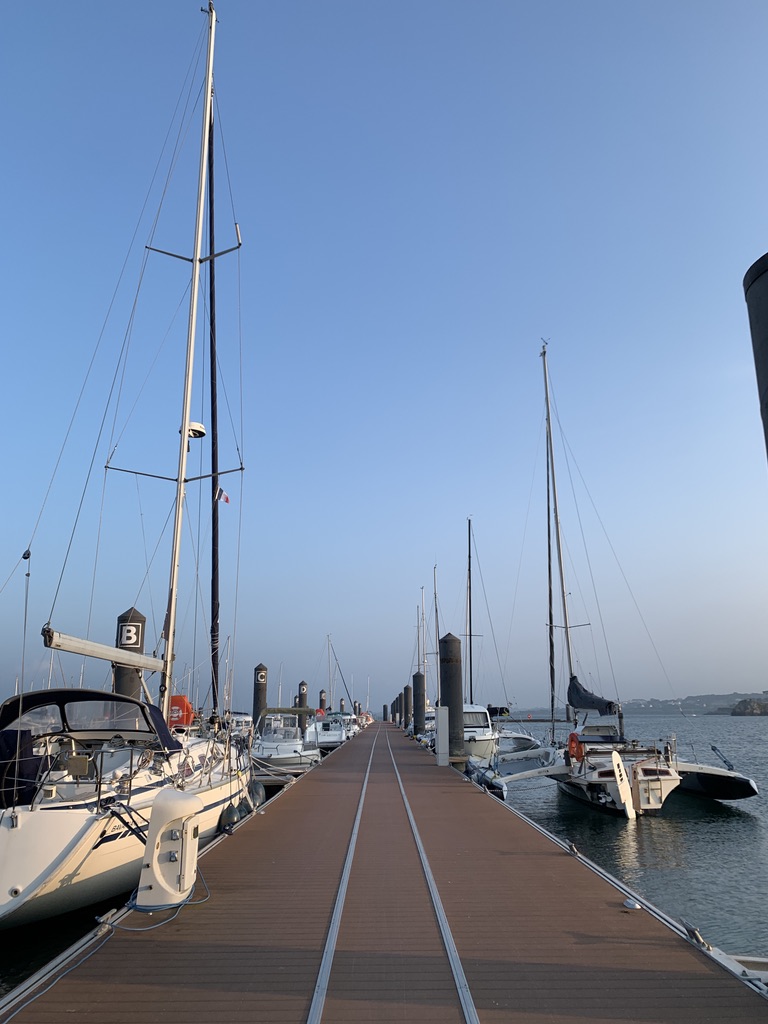
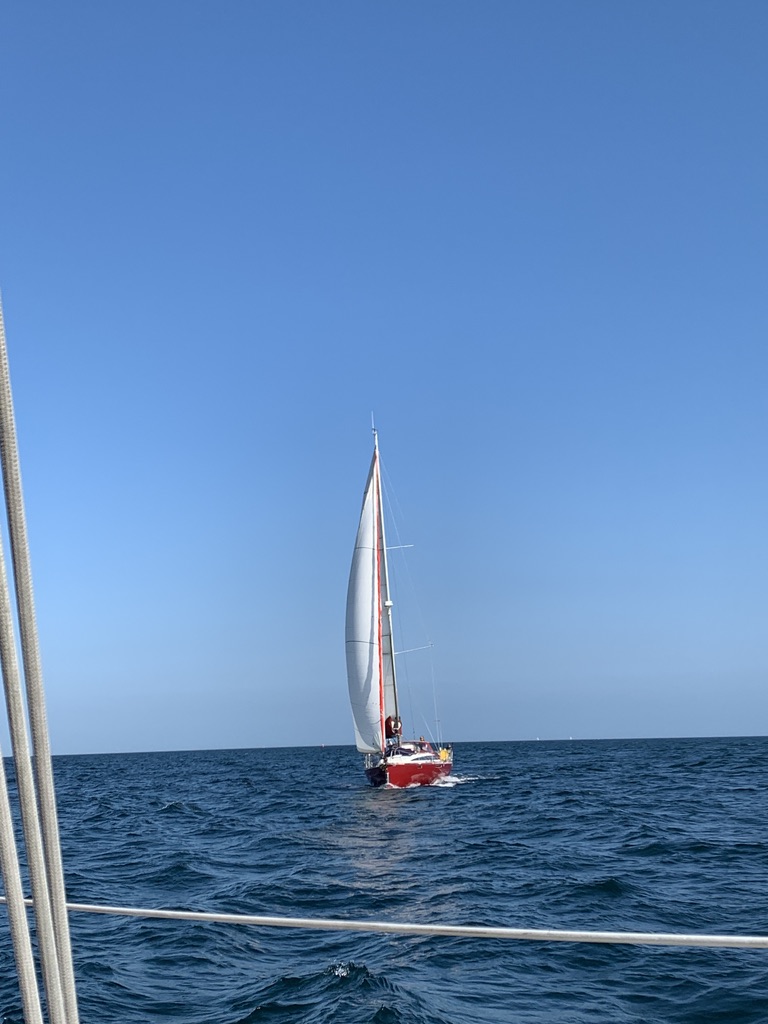
After lunch, Guy, Didier and Sophie leave. Denys and me walk to the town of Roscoff as the marina is located somewhat outside town. It was here, where I arrived on the ferry from Cork in April 1989 when I came back from my 9 months stay in Ireland. But that was the old port, not where the ferry docks now. When I’m walking back to the marina I meet an Irish couple from Dublin. There was also a red haired girl waiting for the ferry and you can see that Roscoff is frequented by Irish and other English speaking people. You actually do hear a lot of English in the streets of this little Breton seaport.


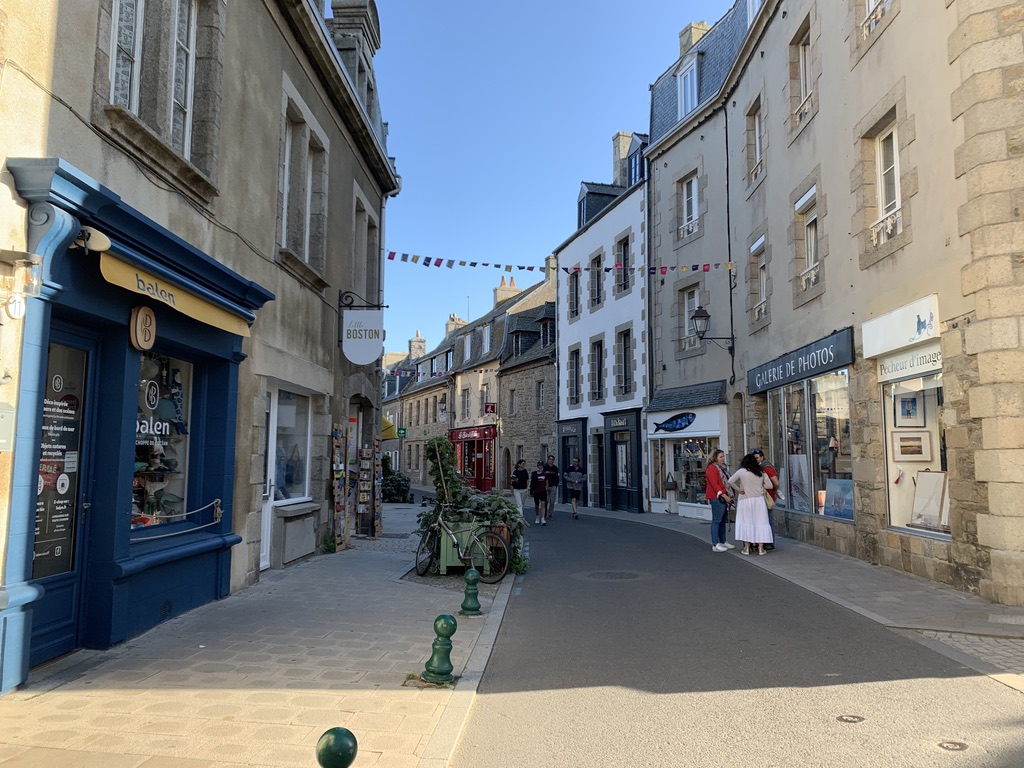
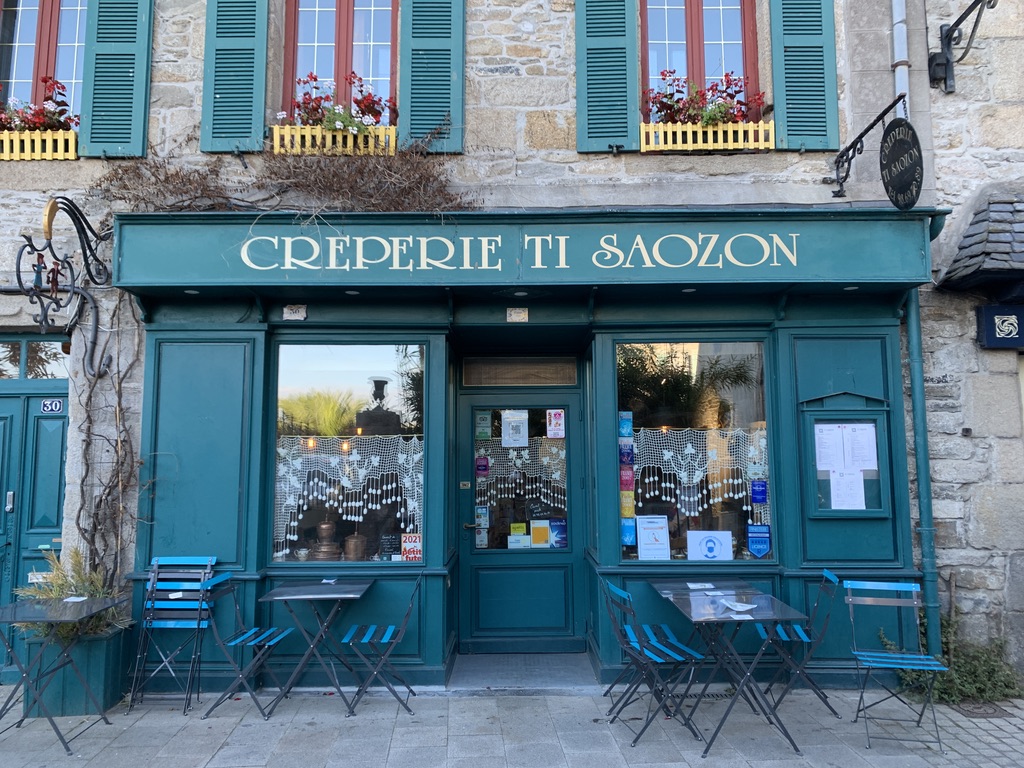
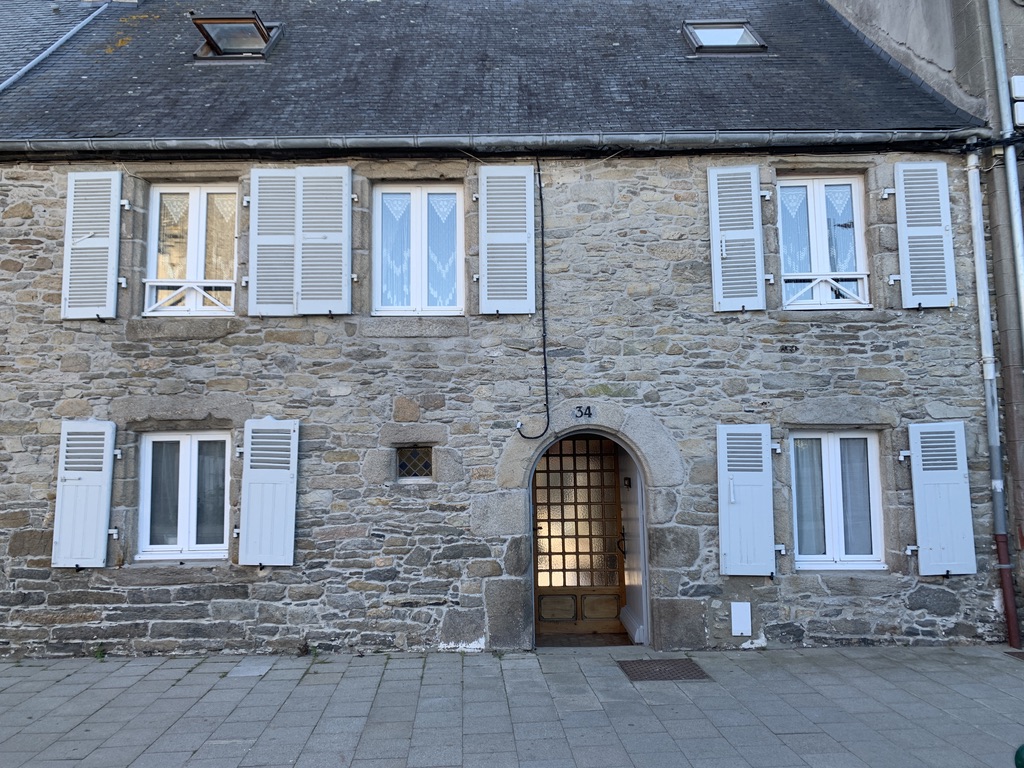
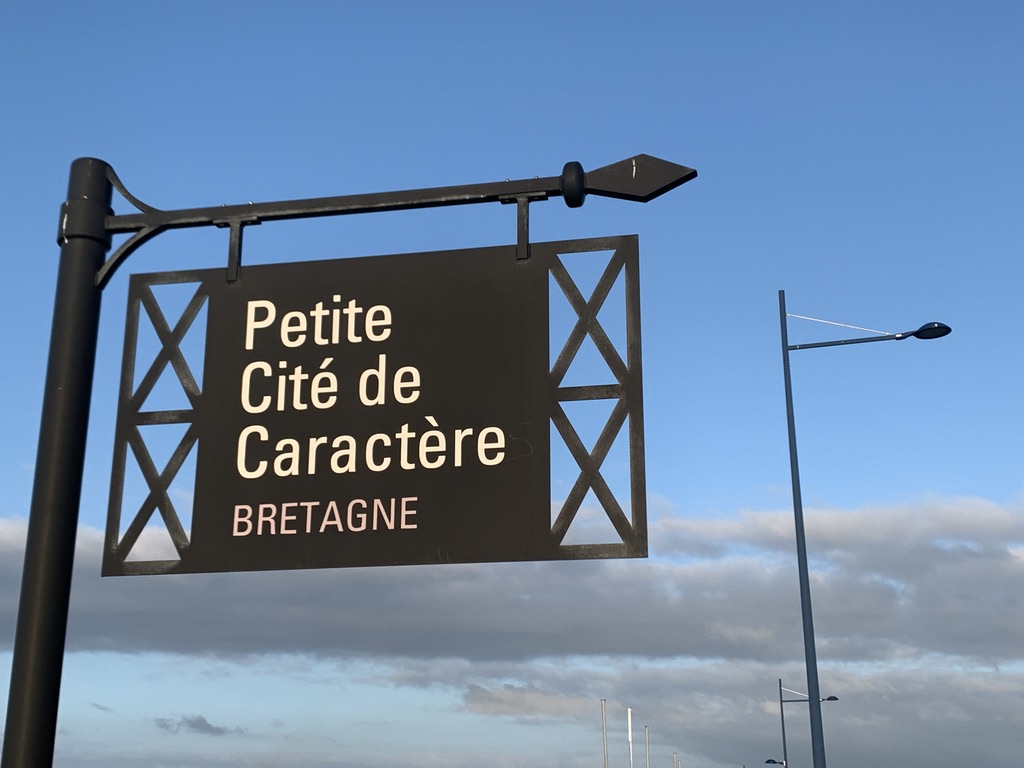
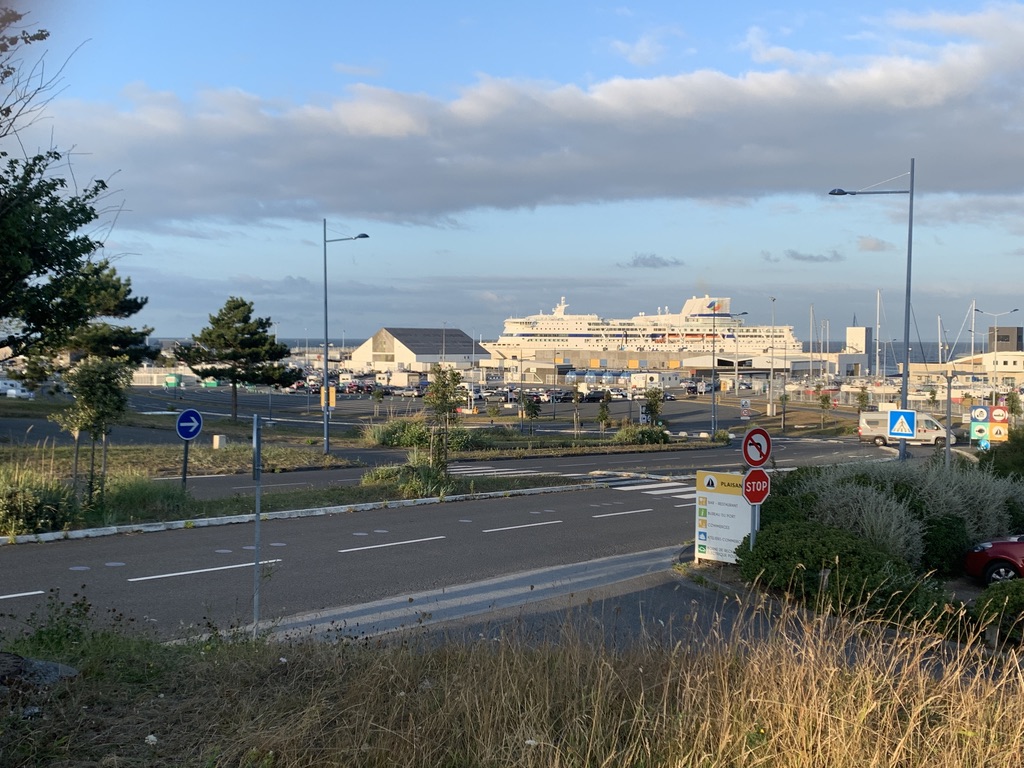
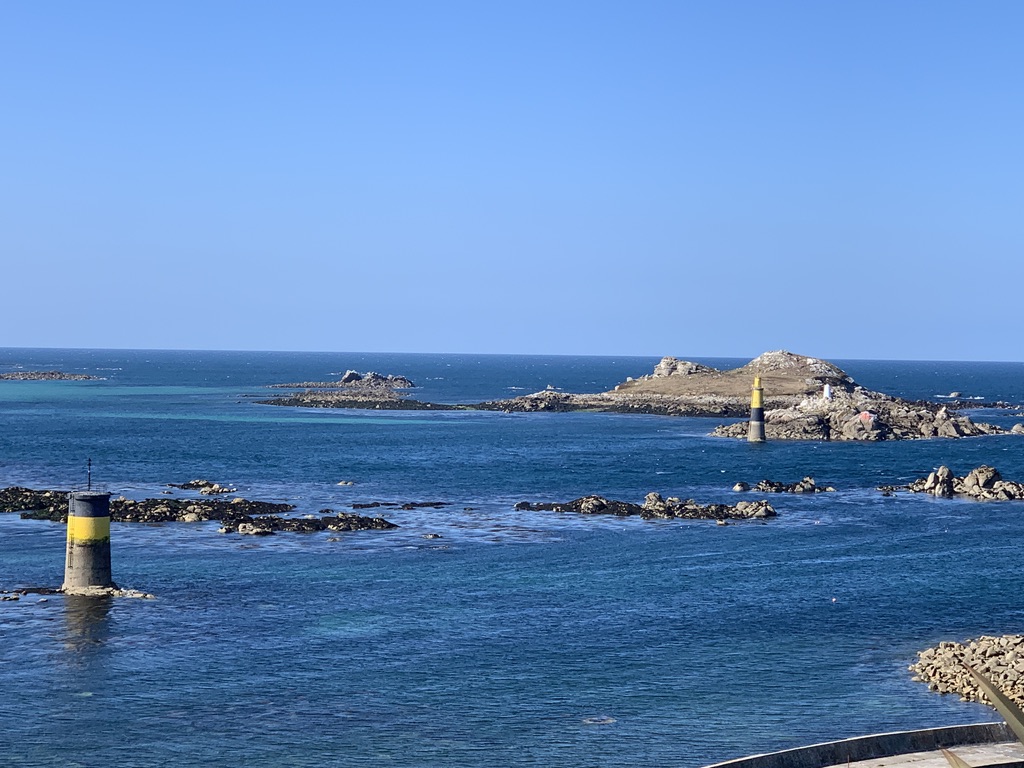
Denys and me are tired of the long days at sea, exposed to sea, sun and wind and go to bed early. It’s a rather brisk night.
